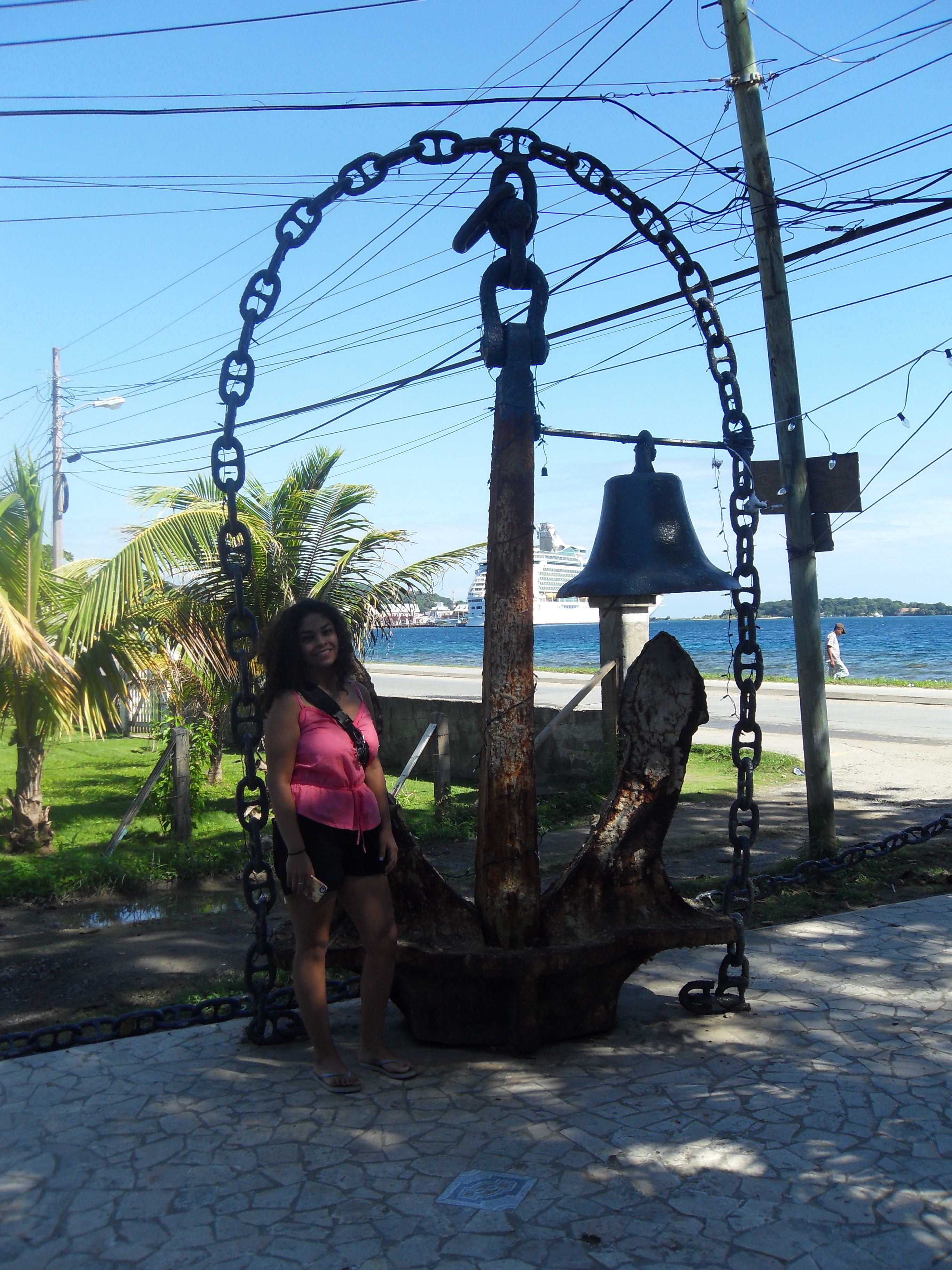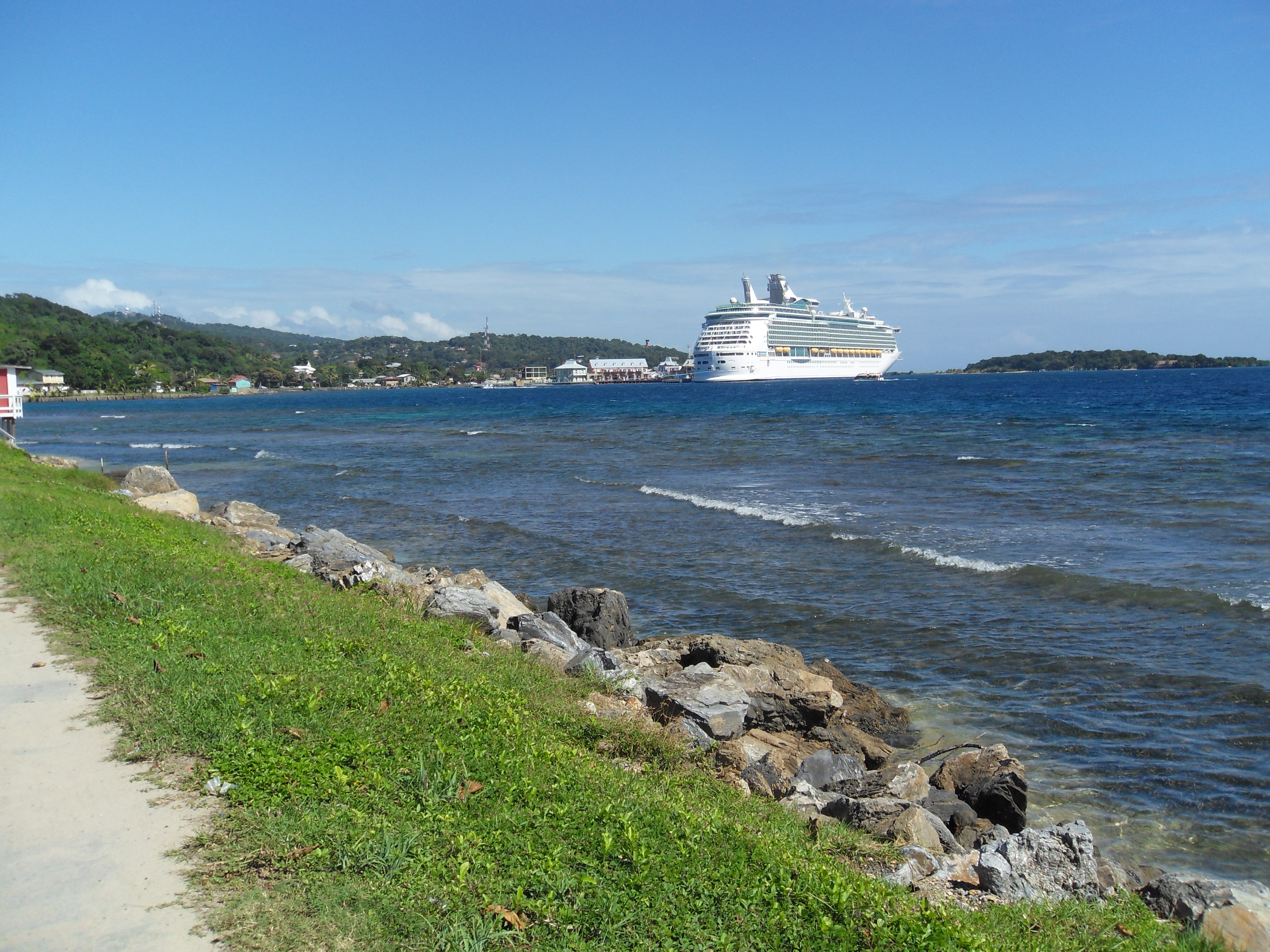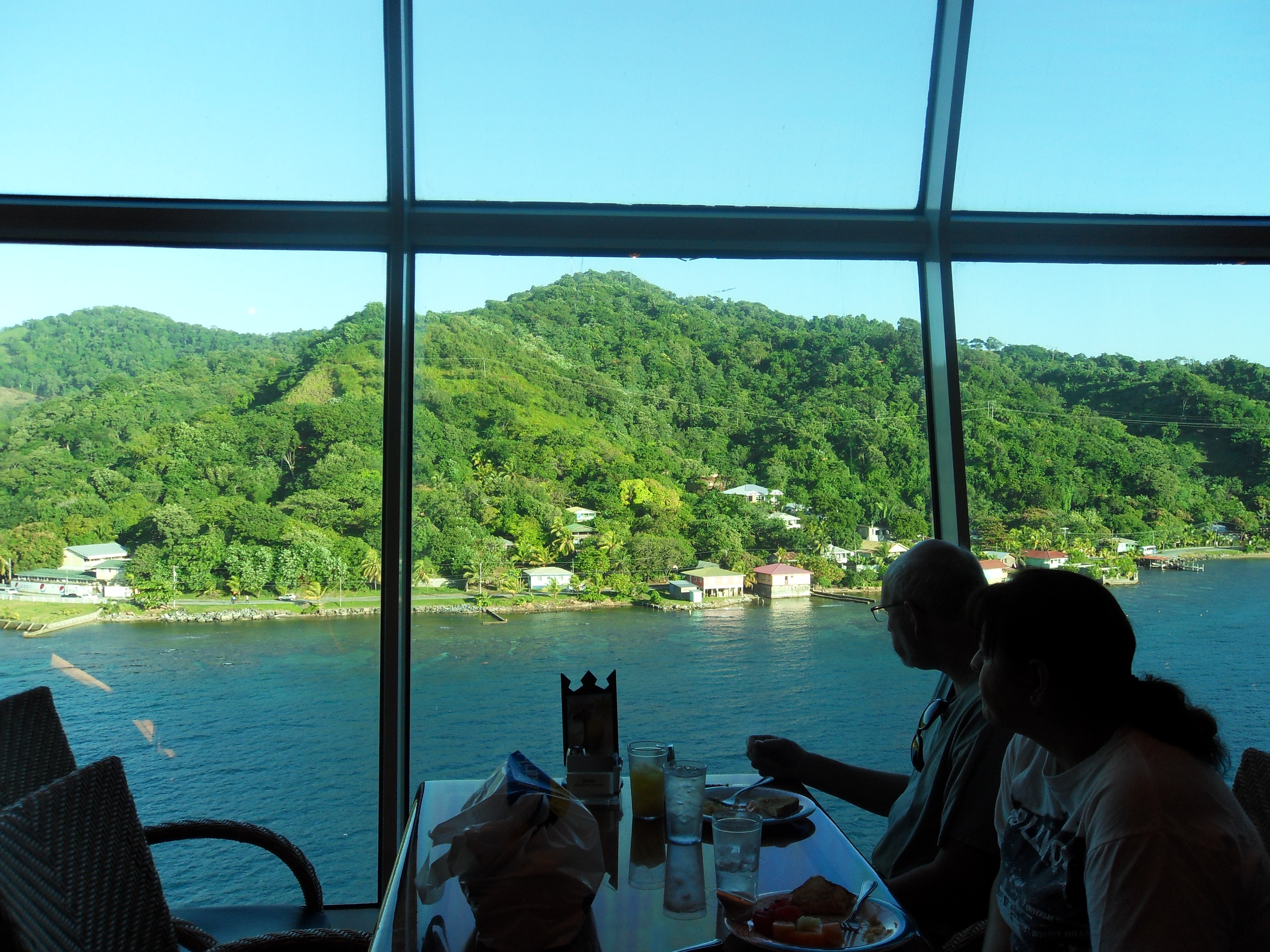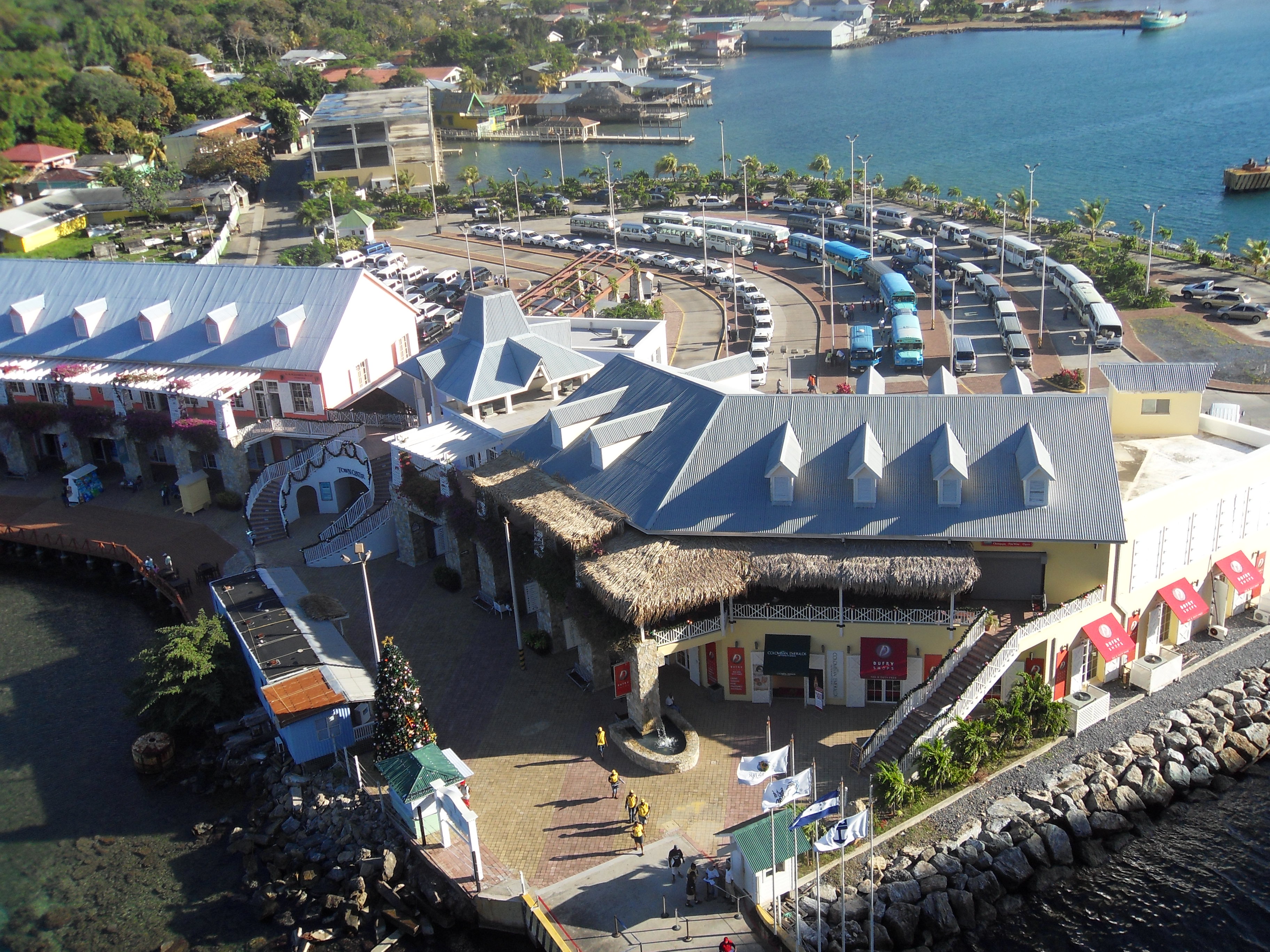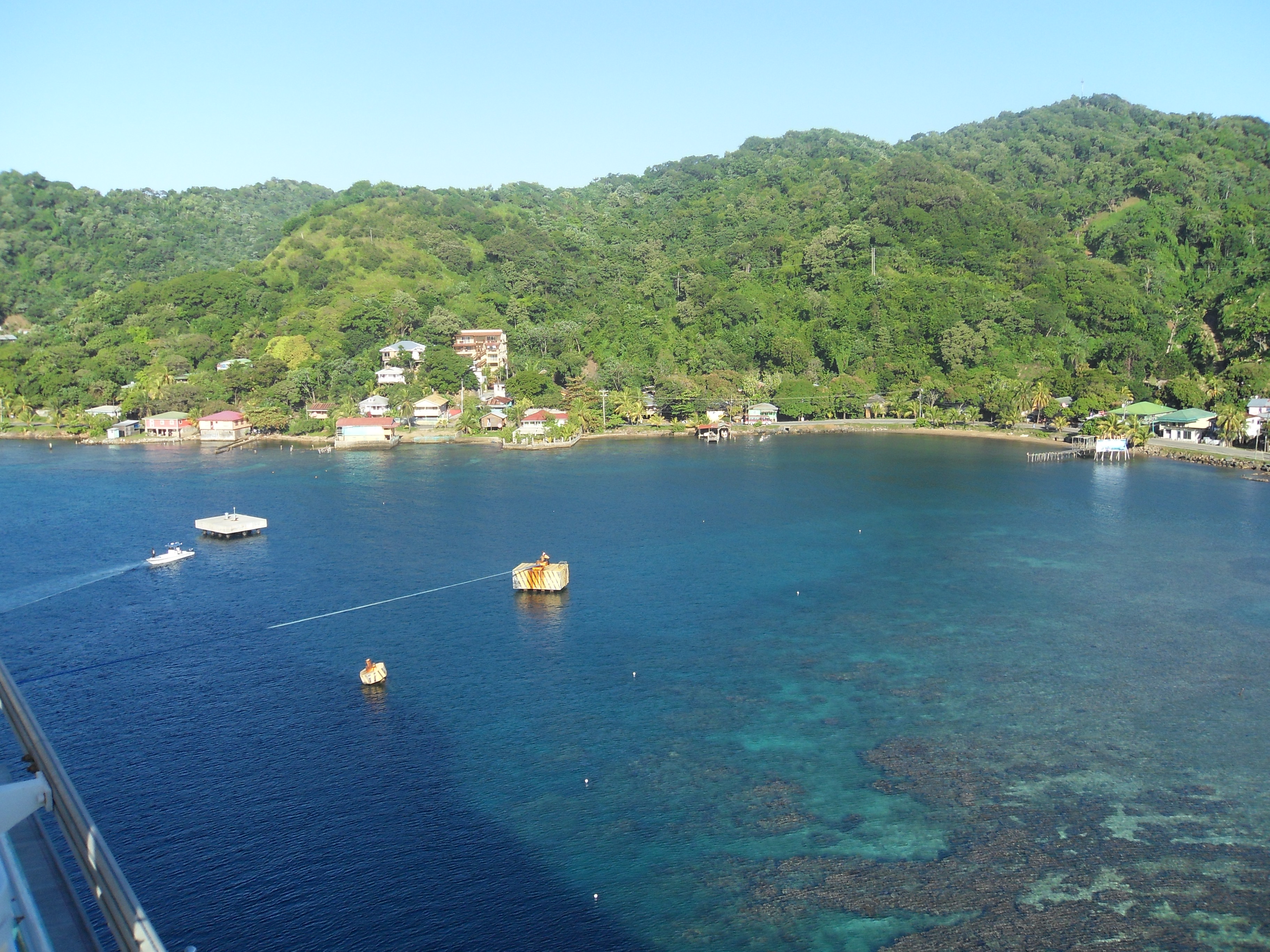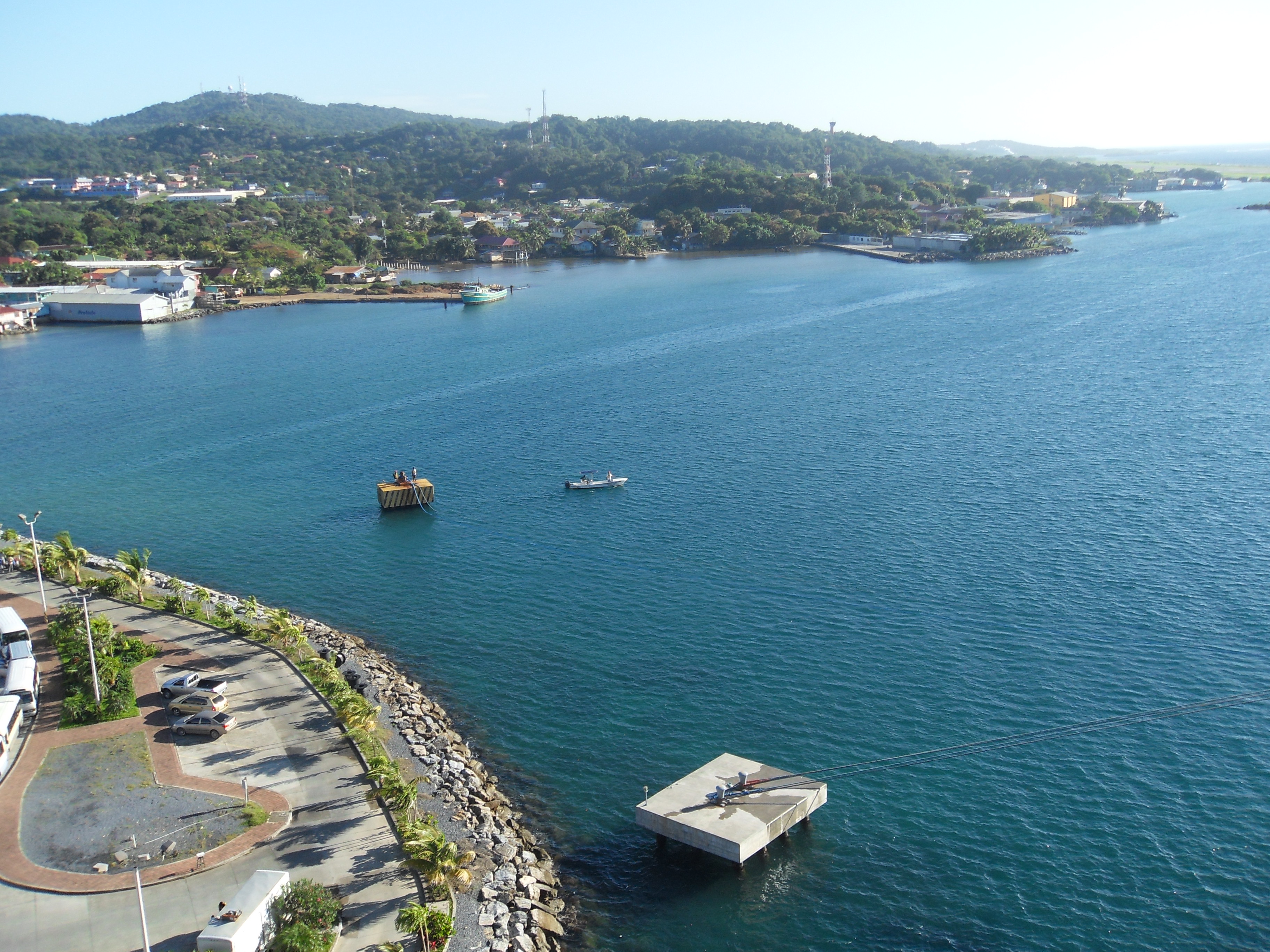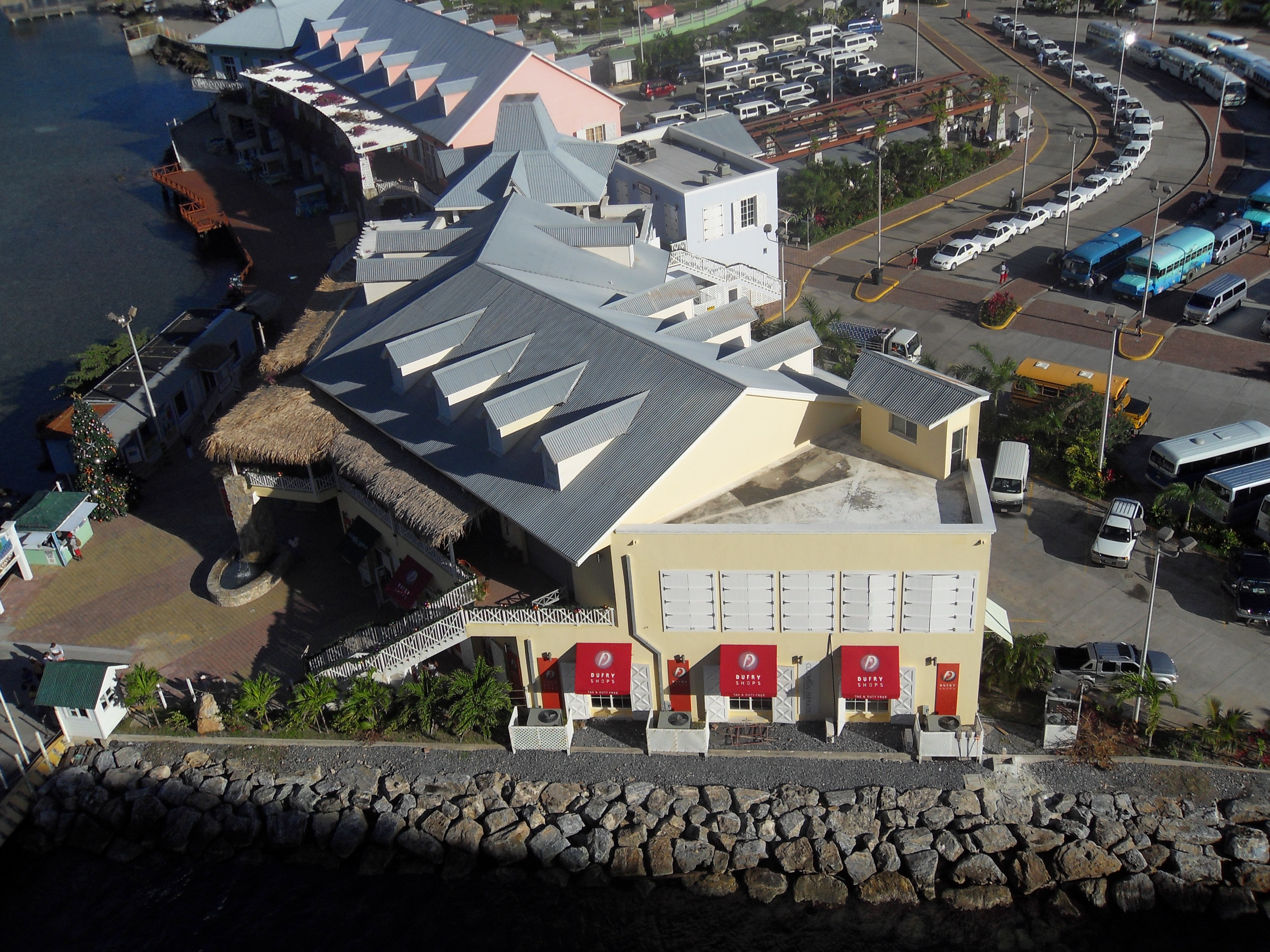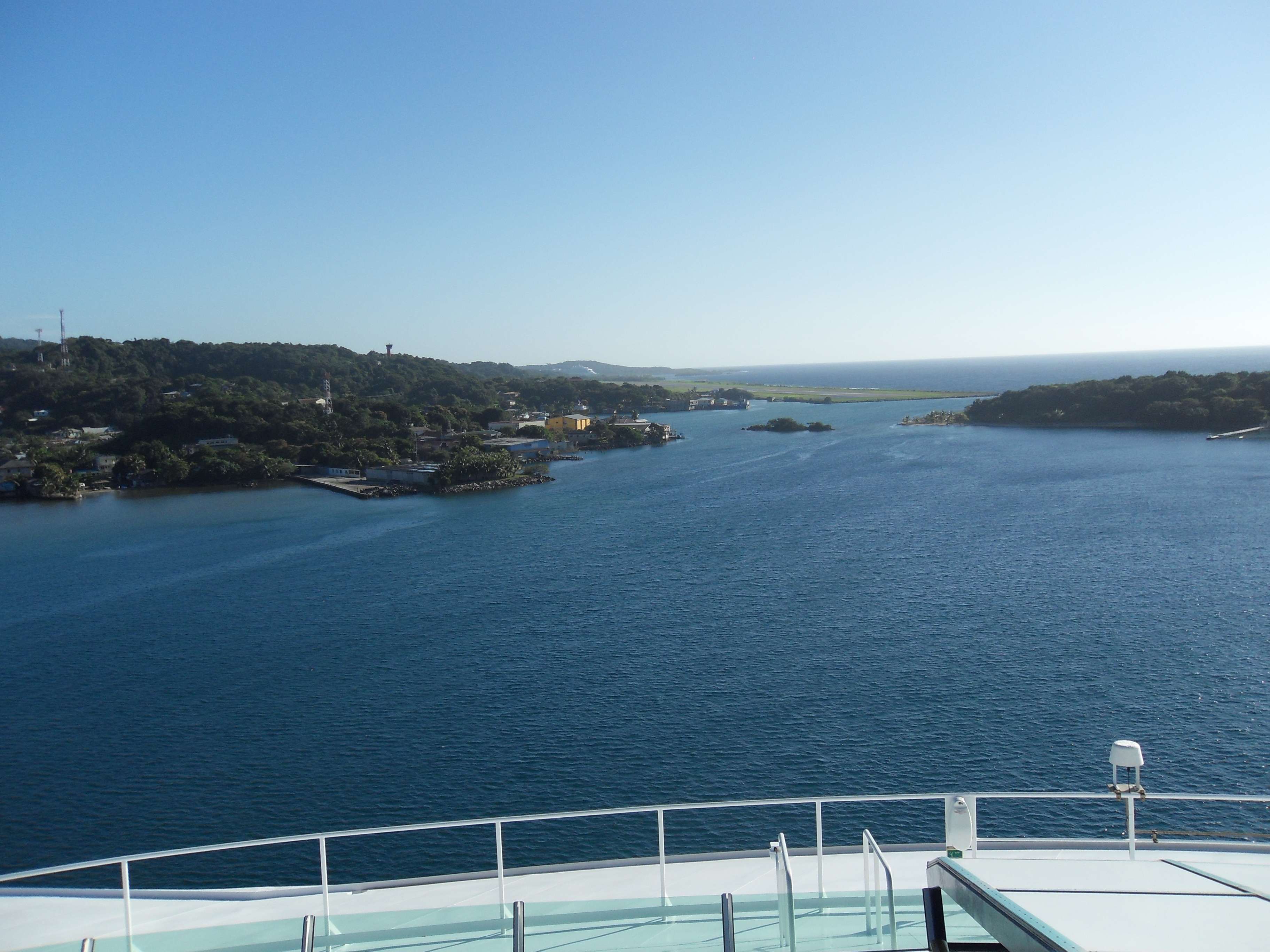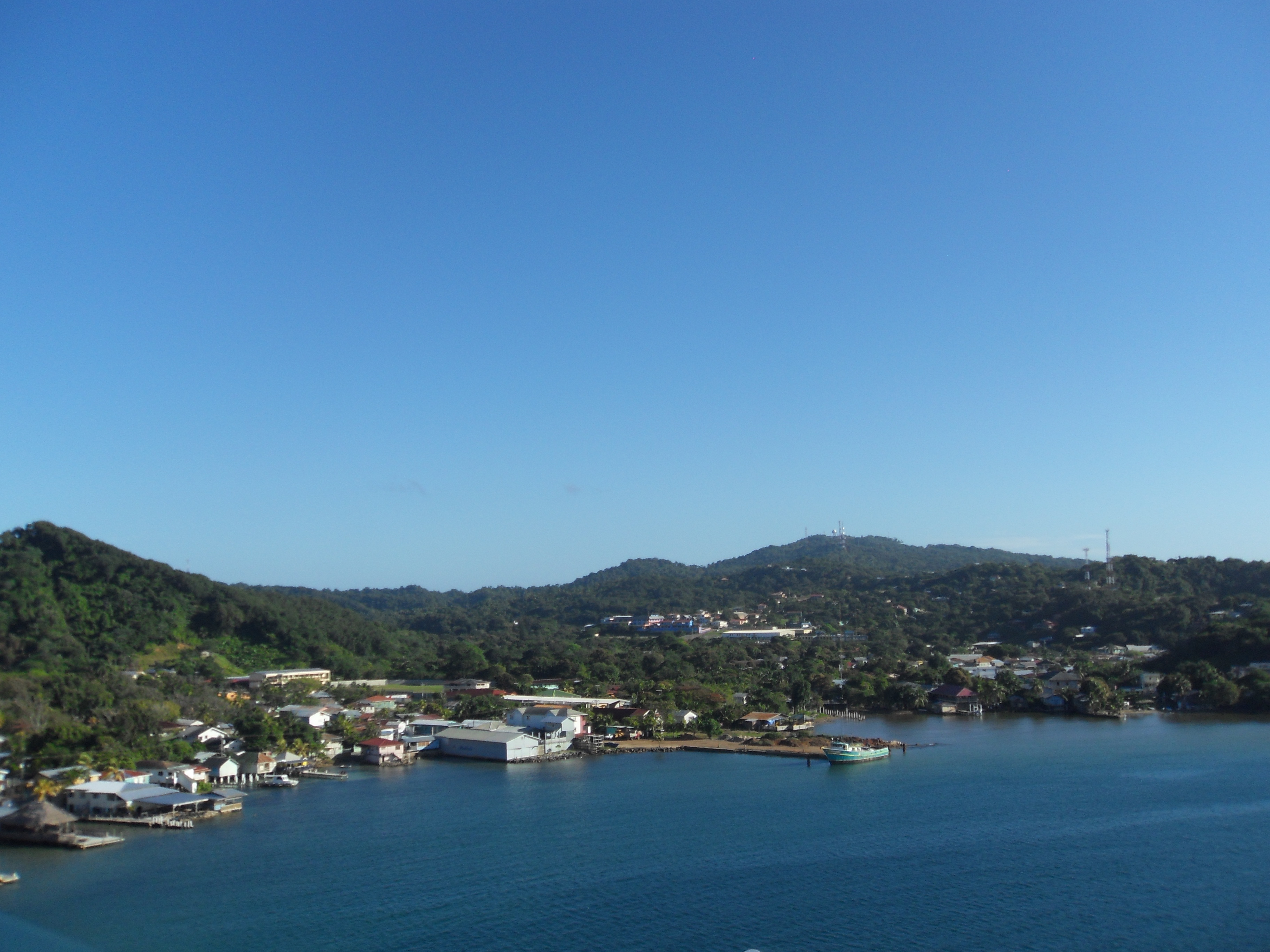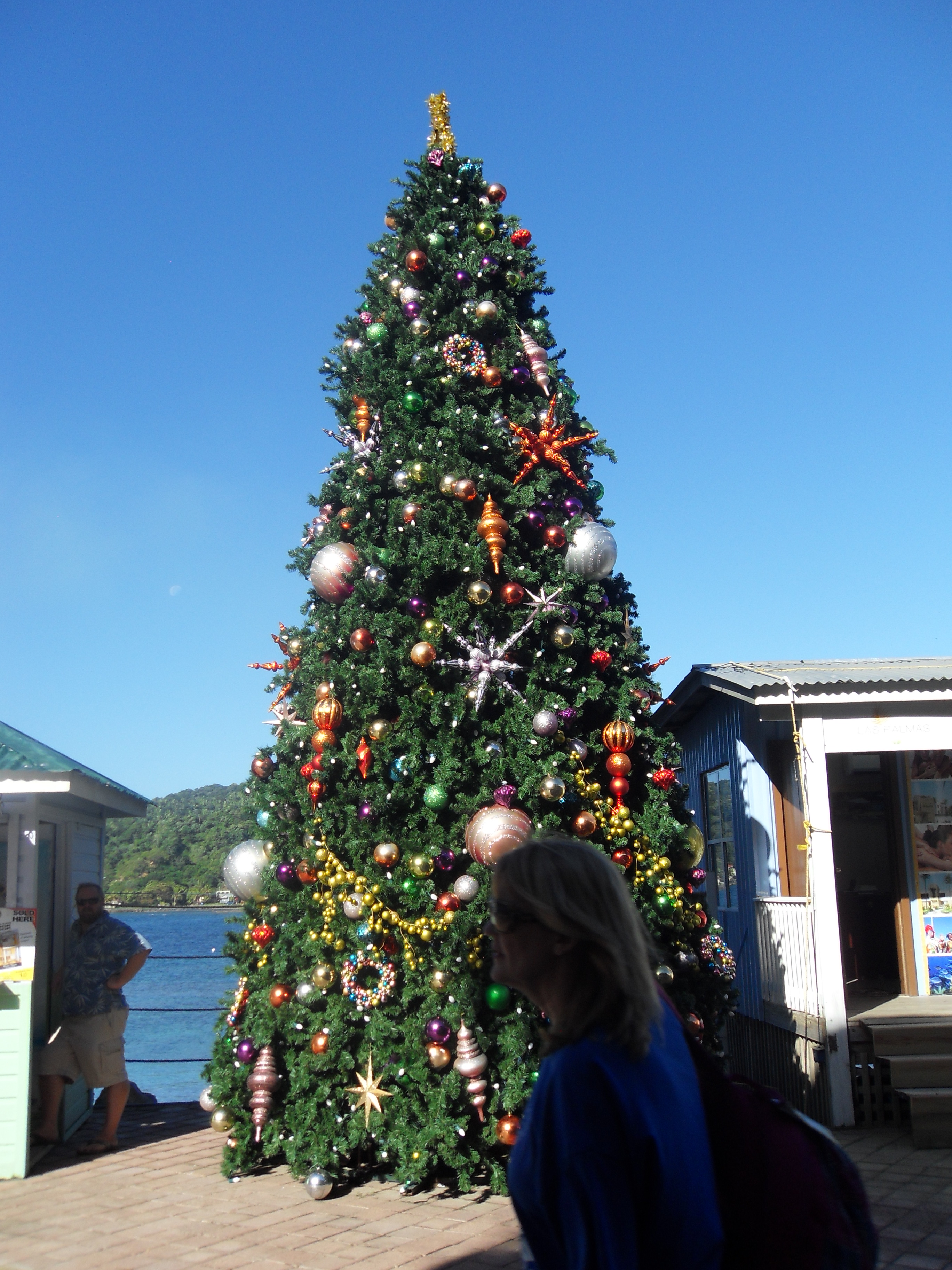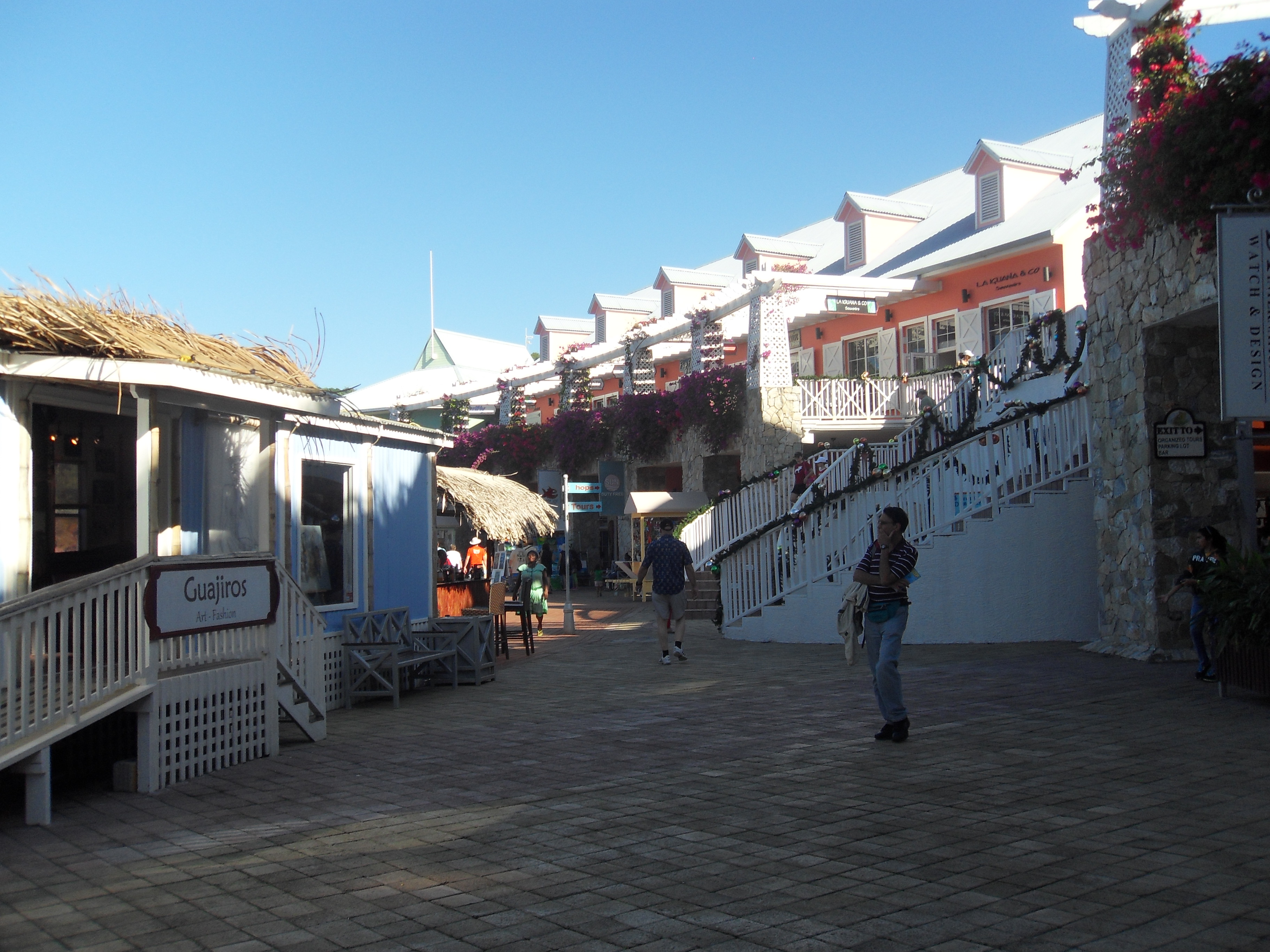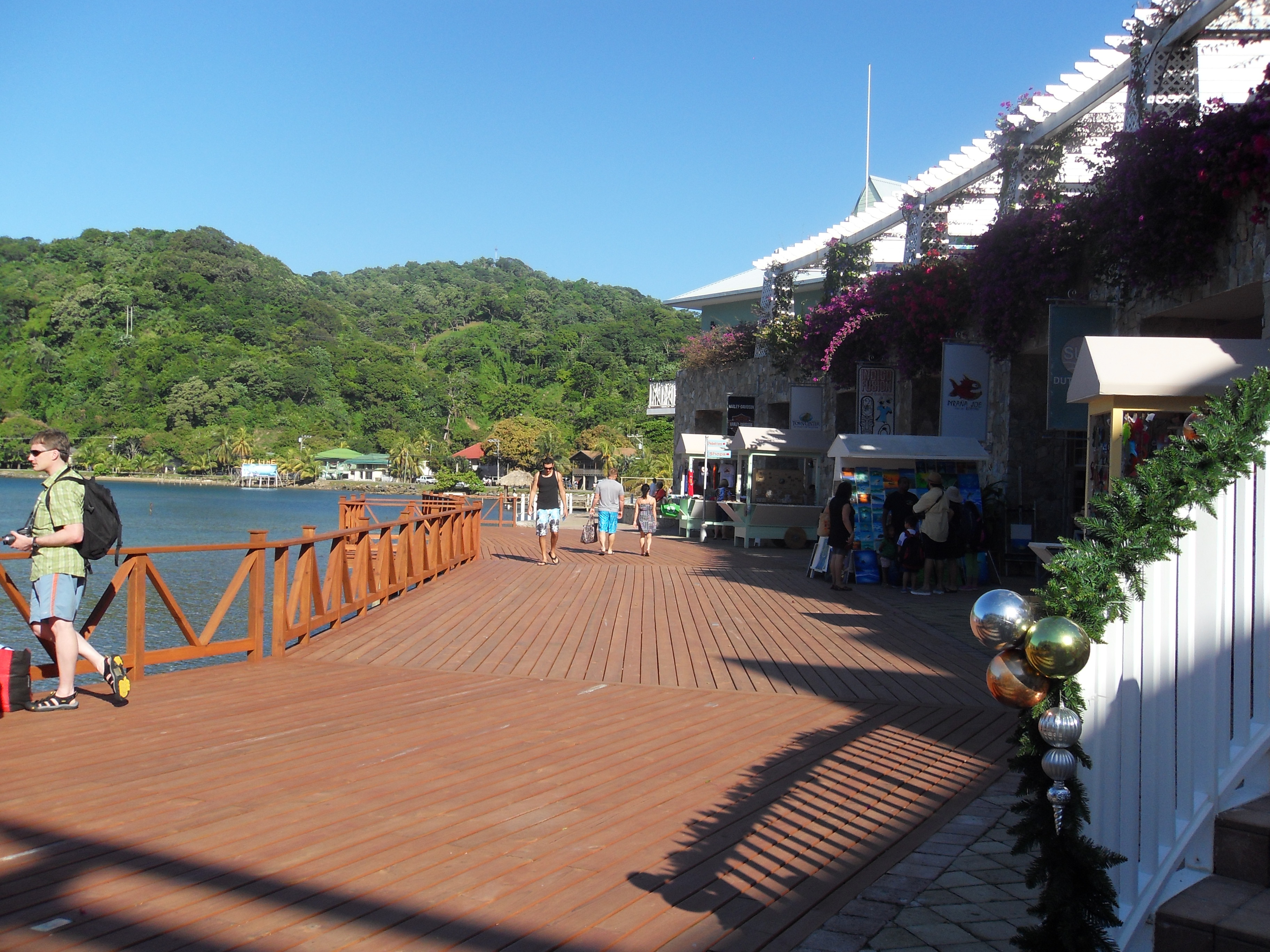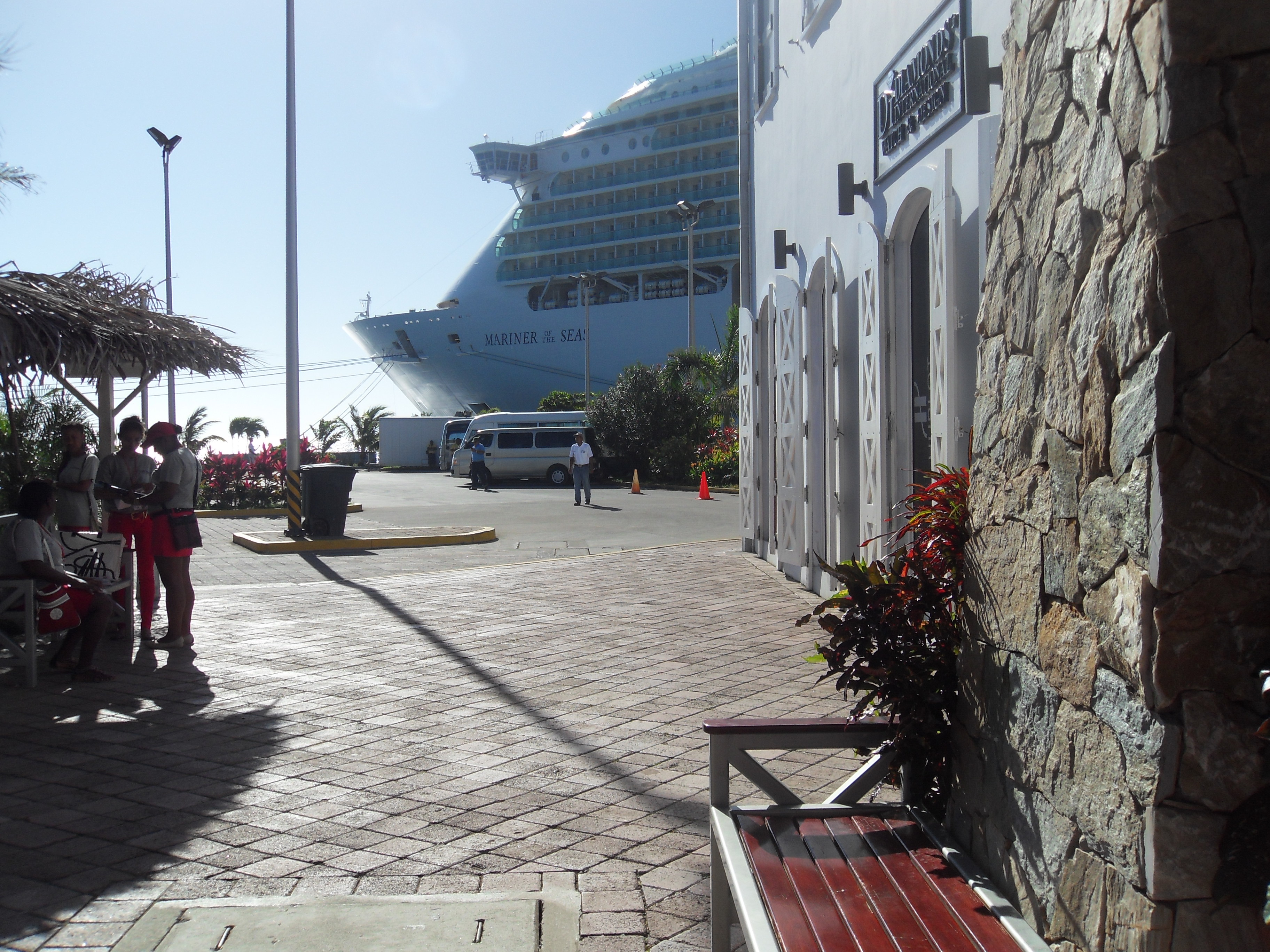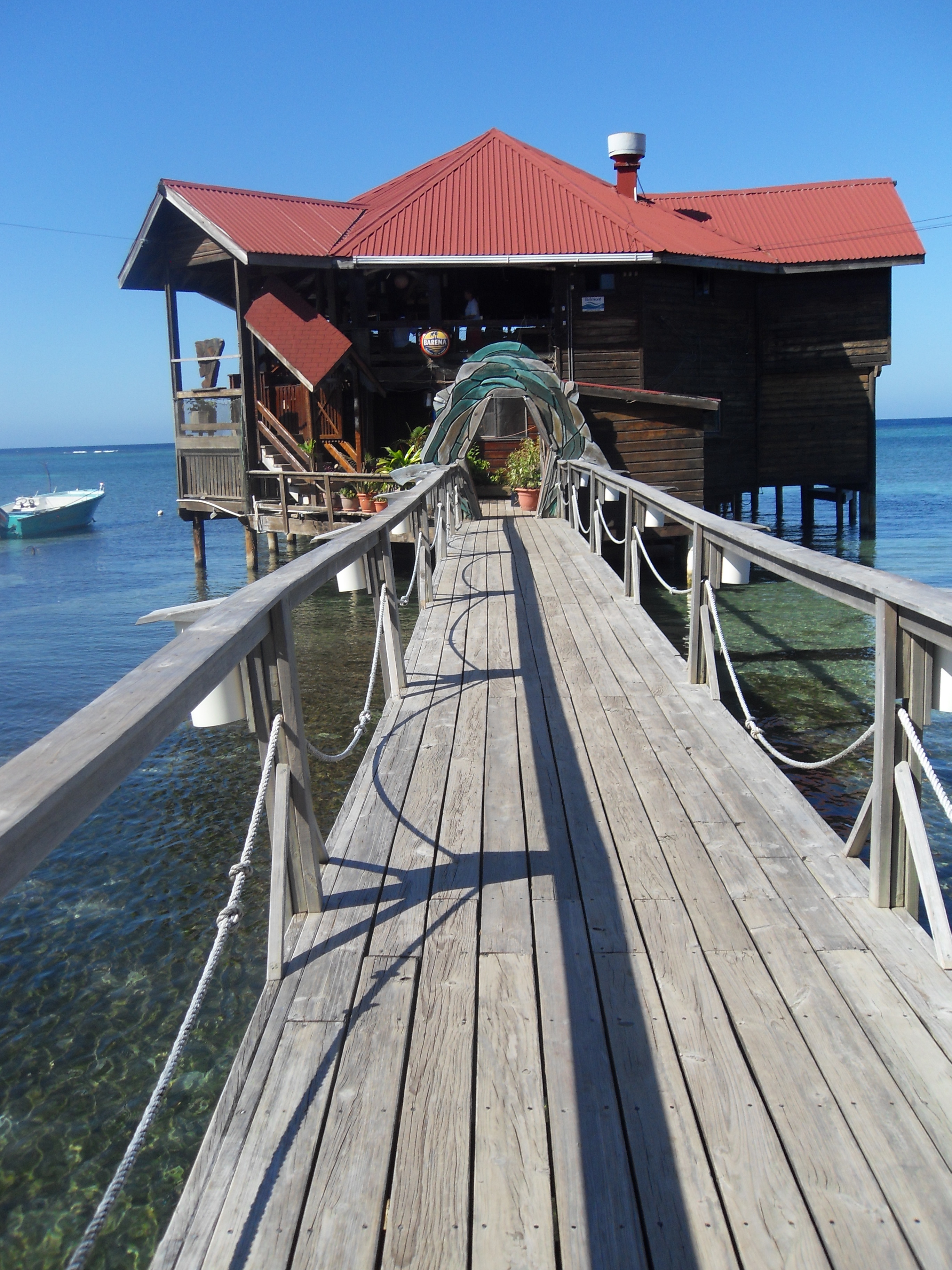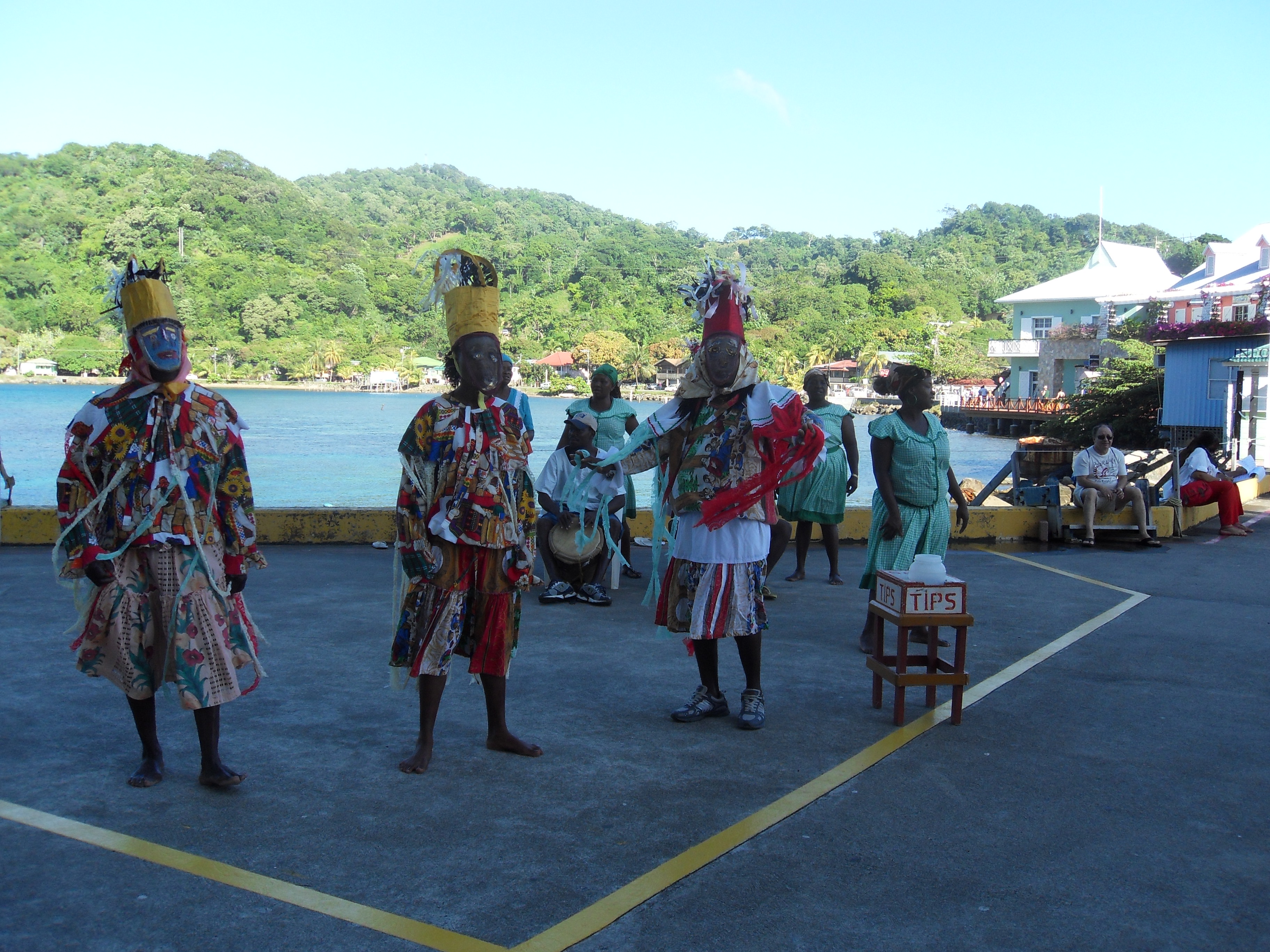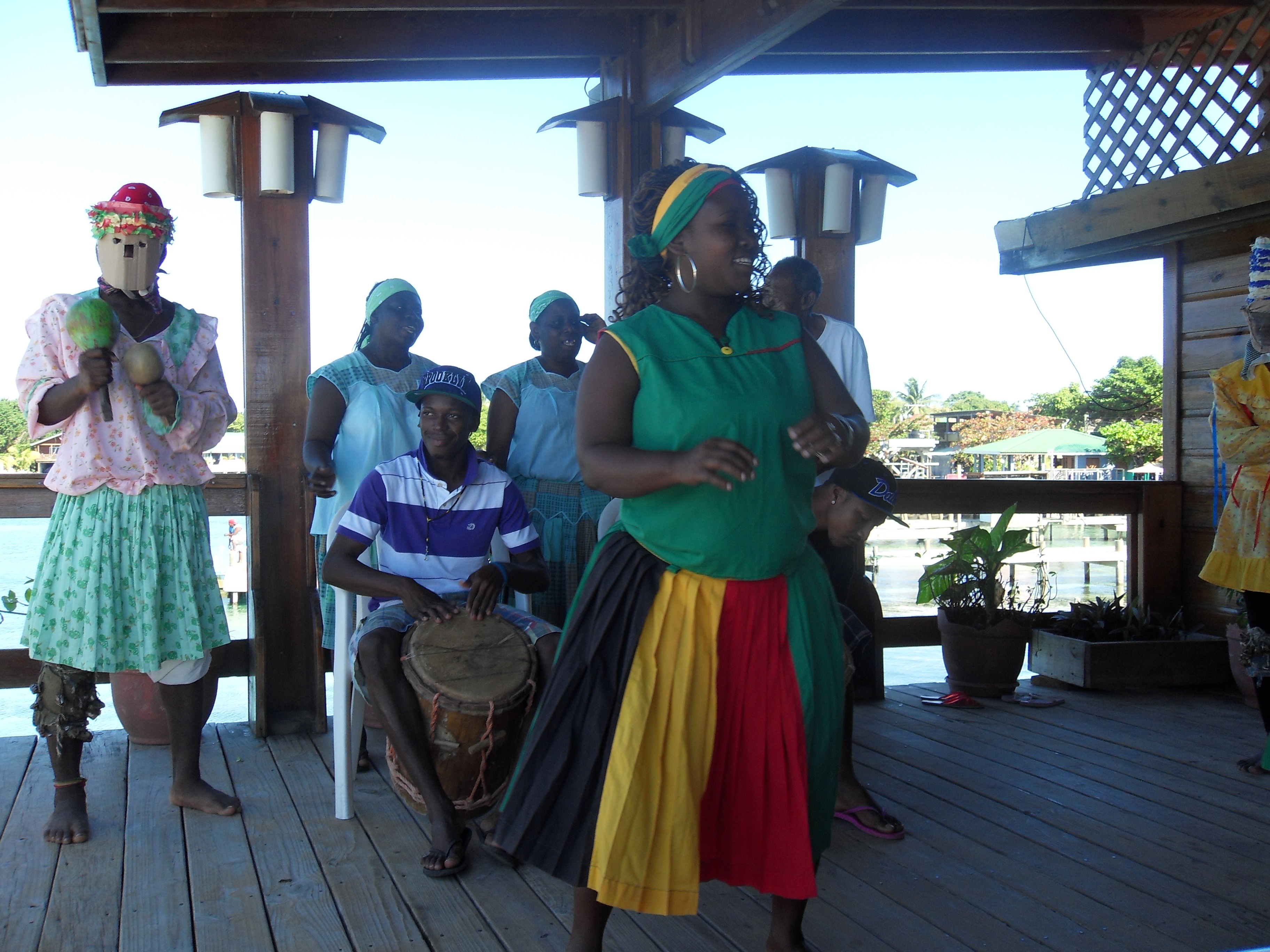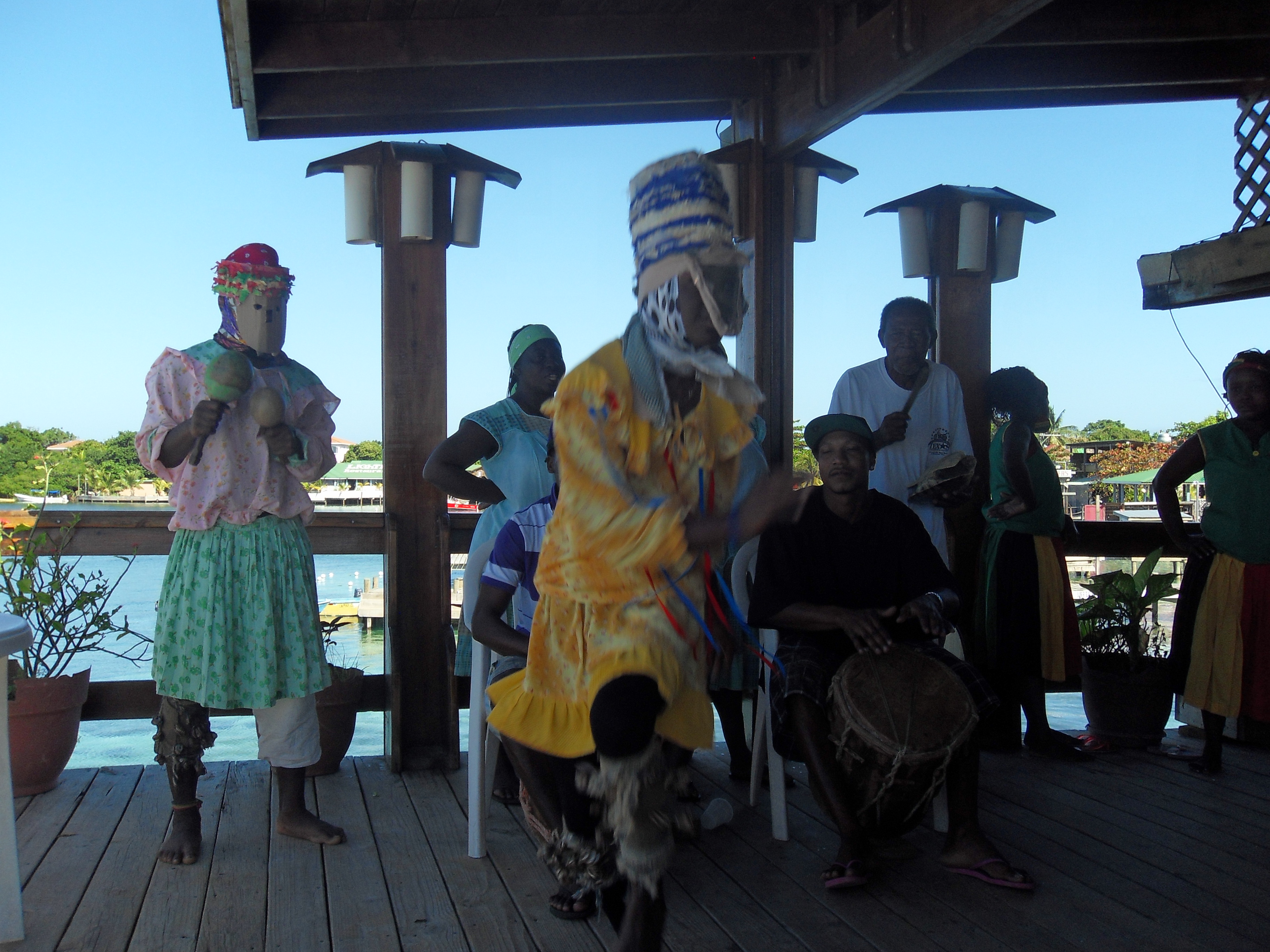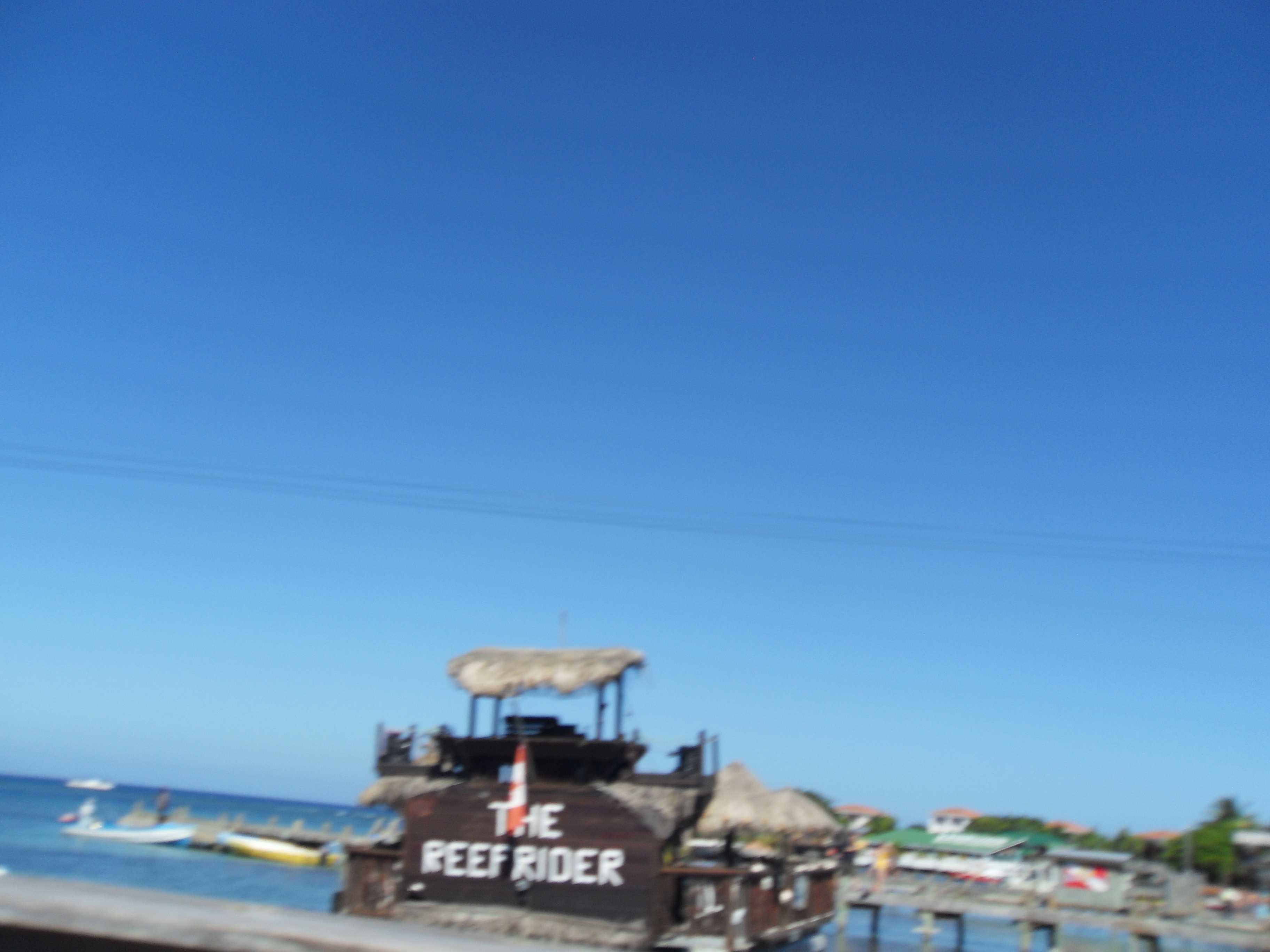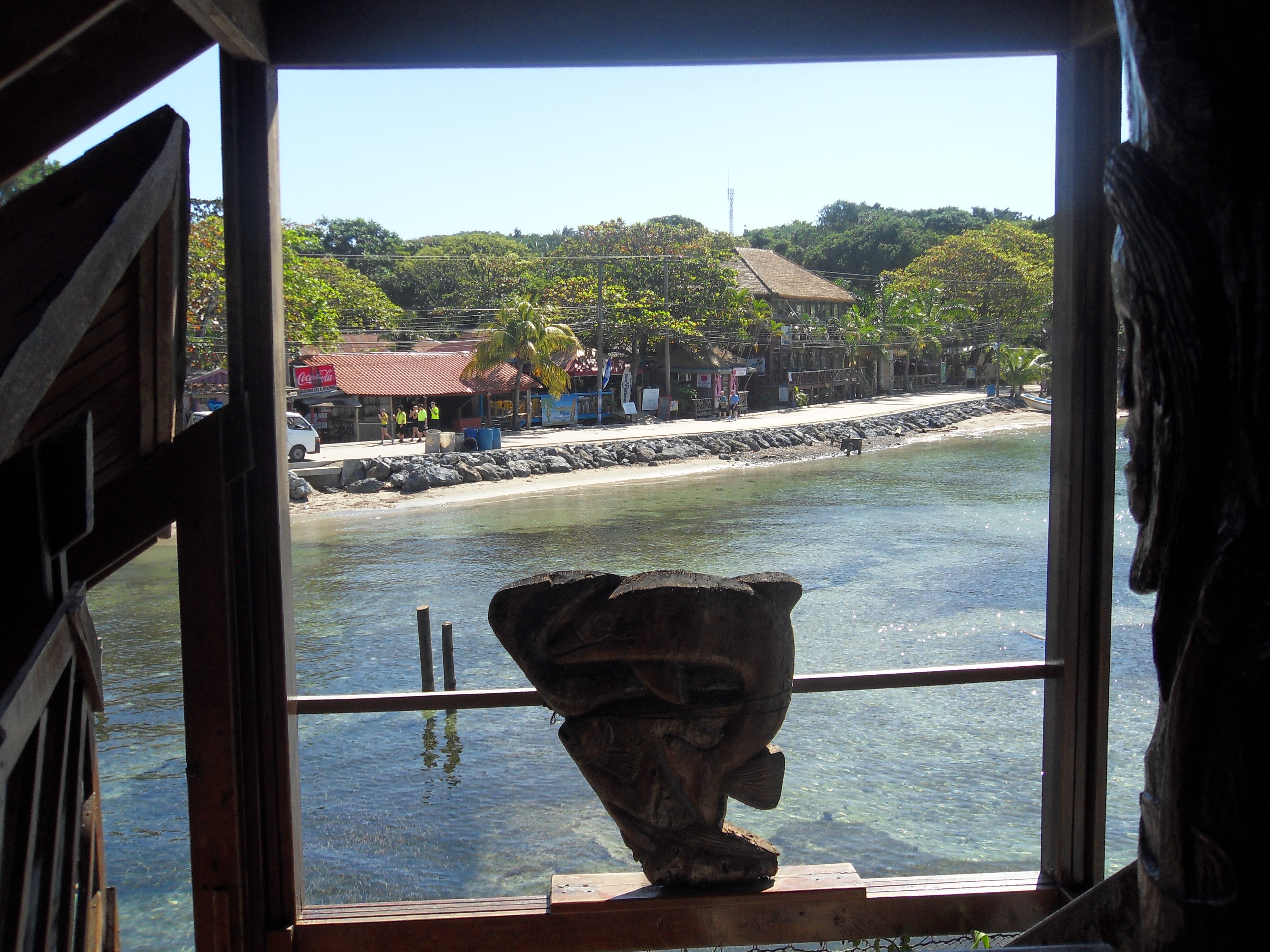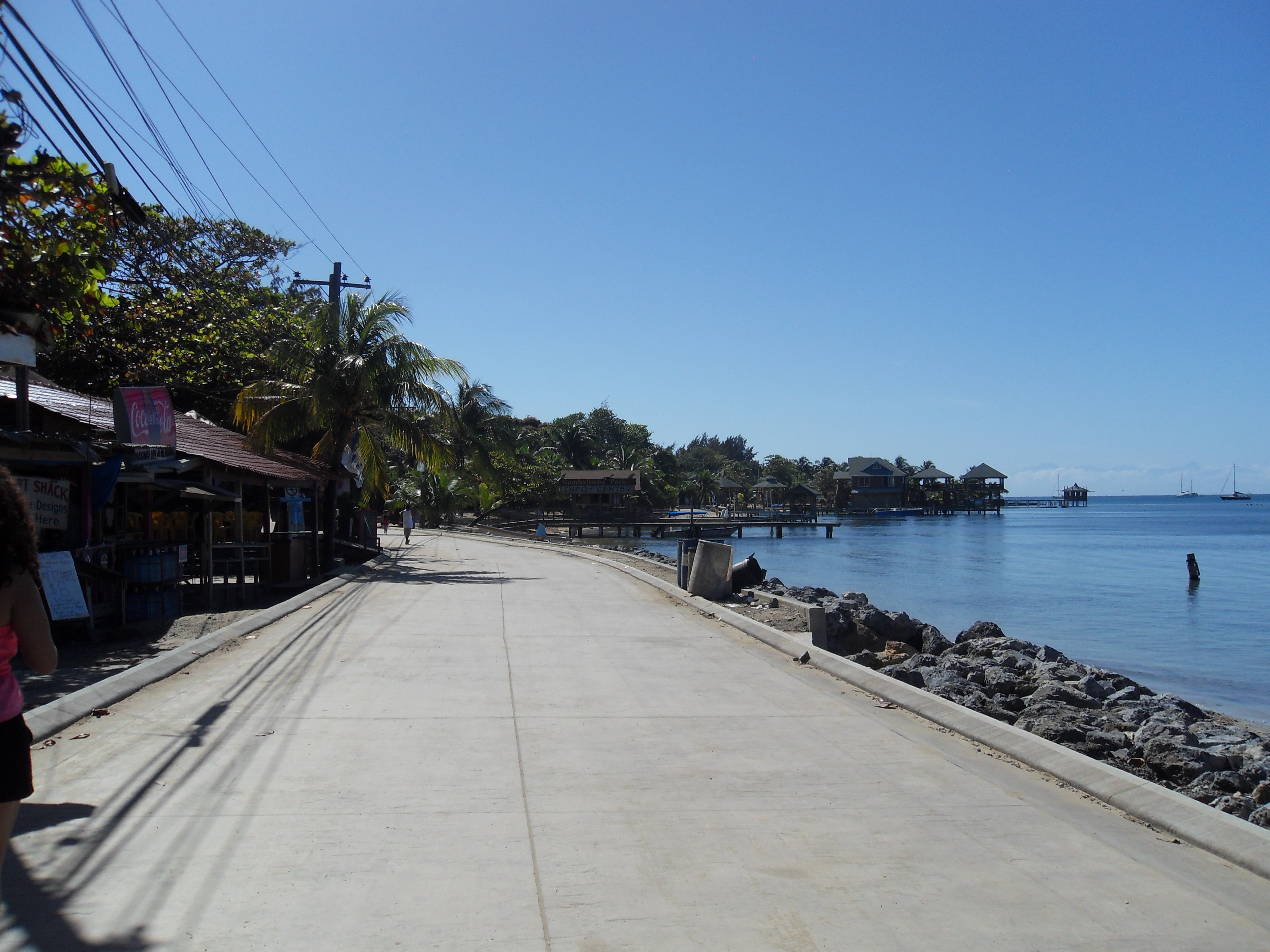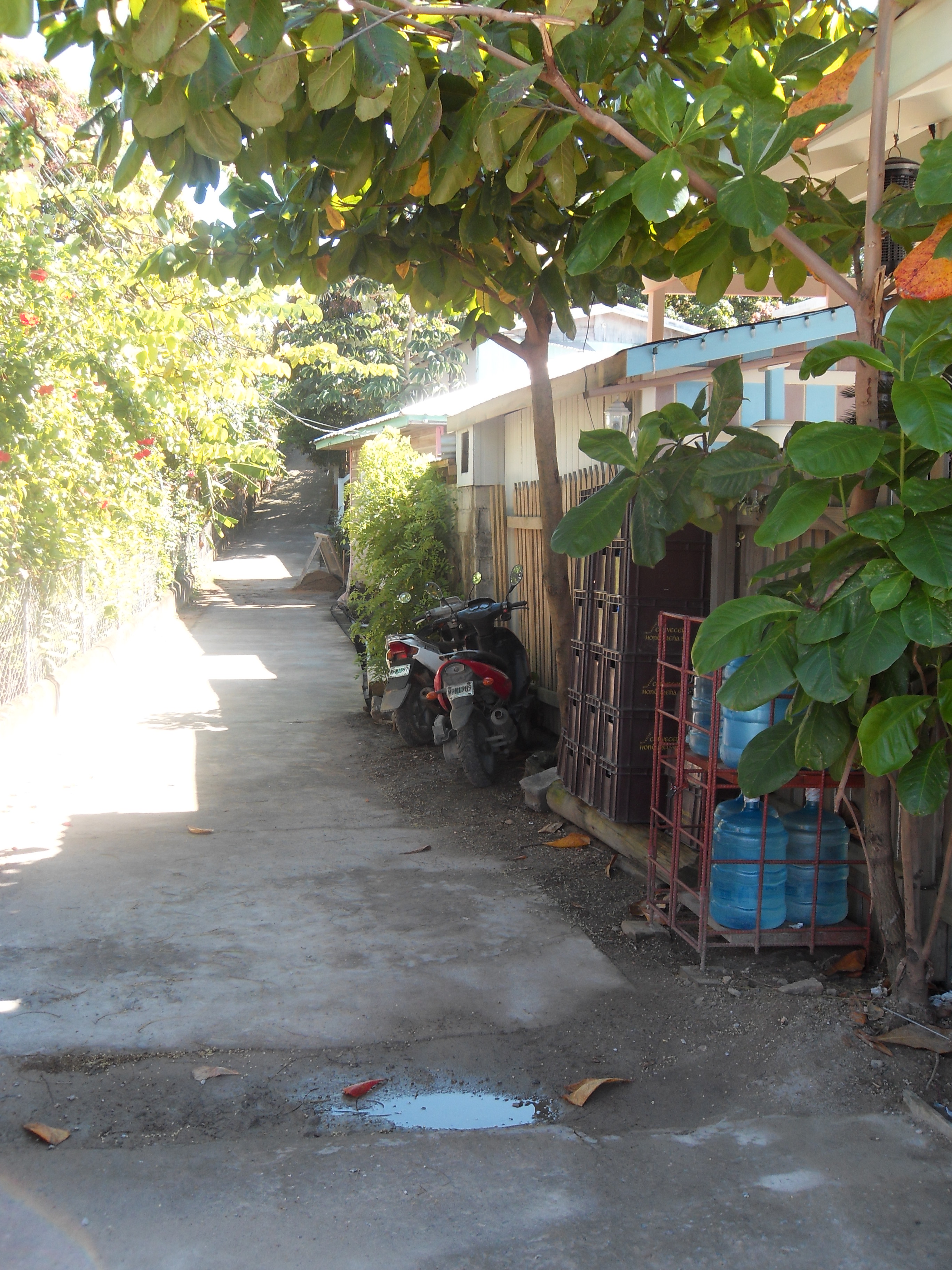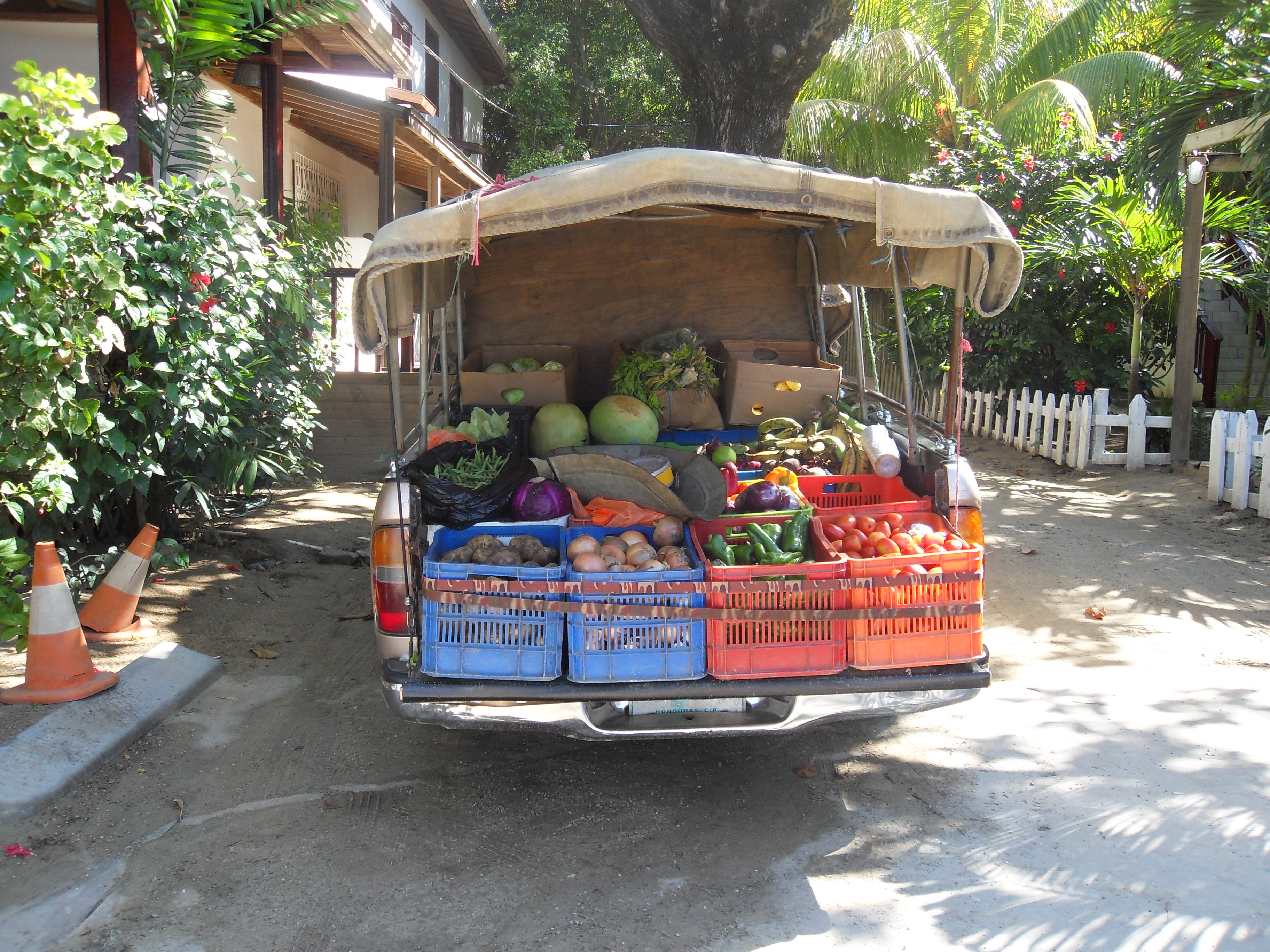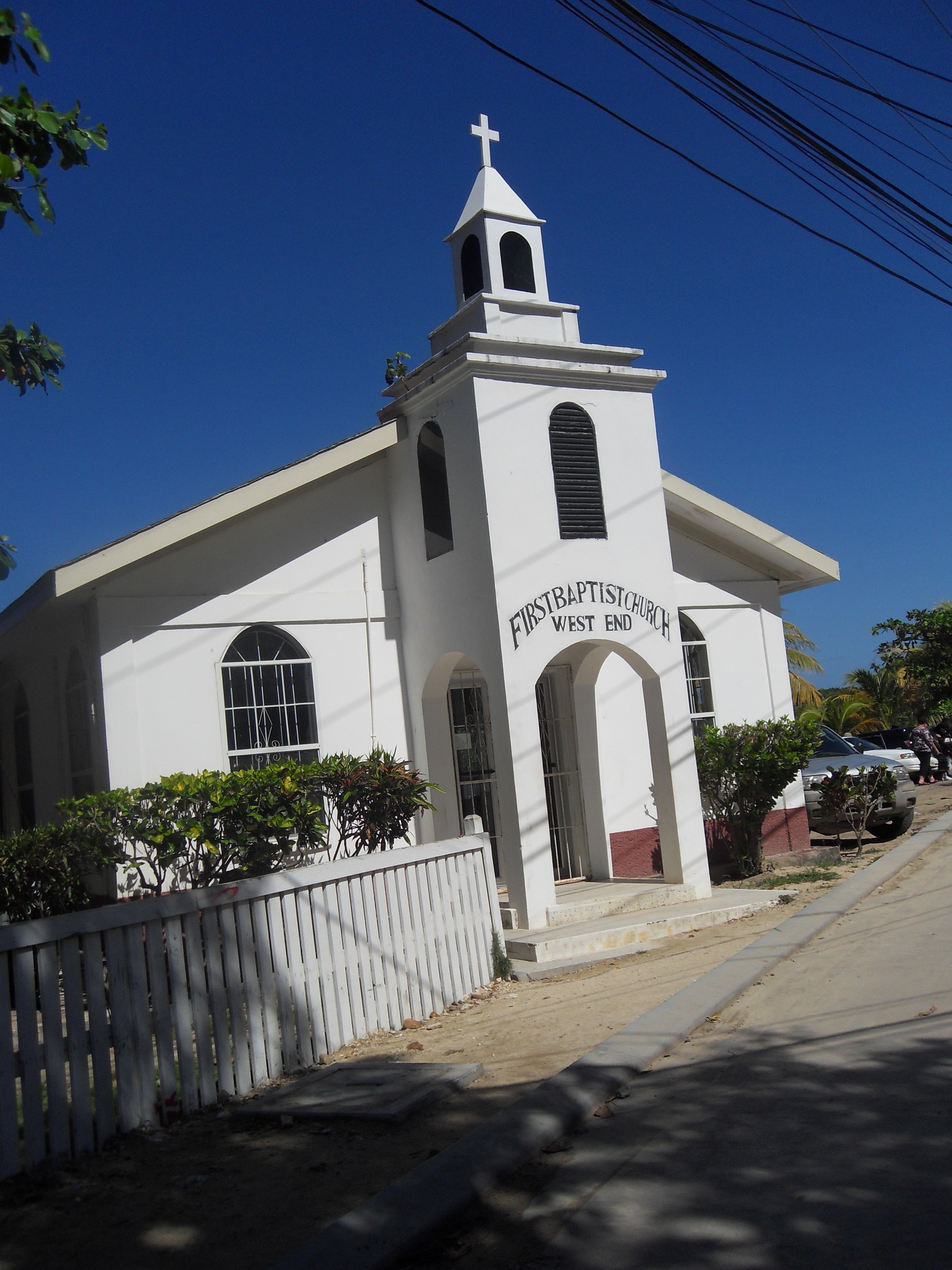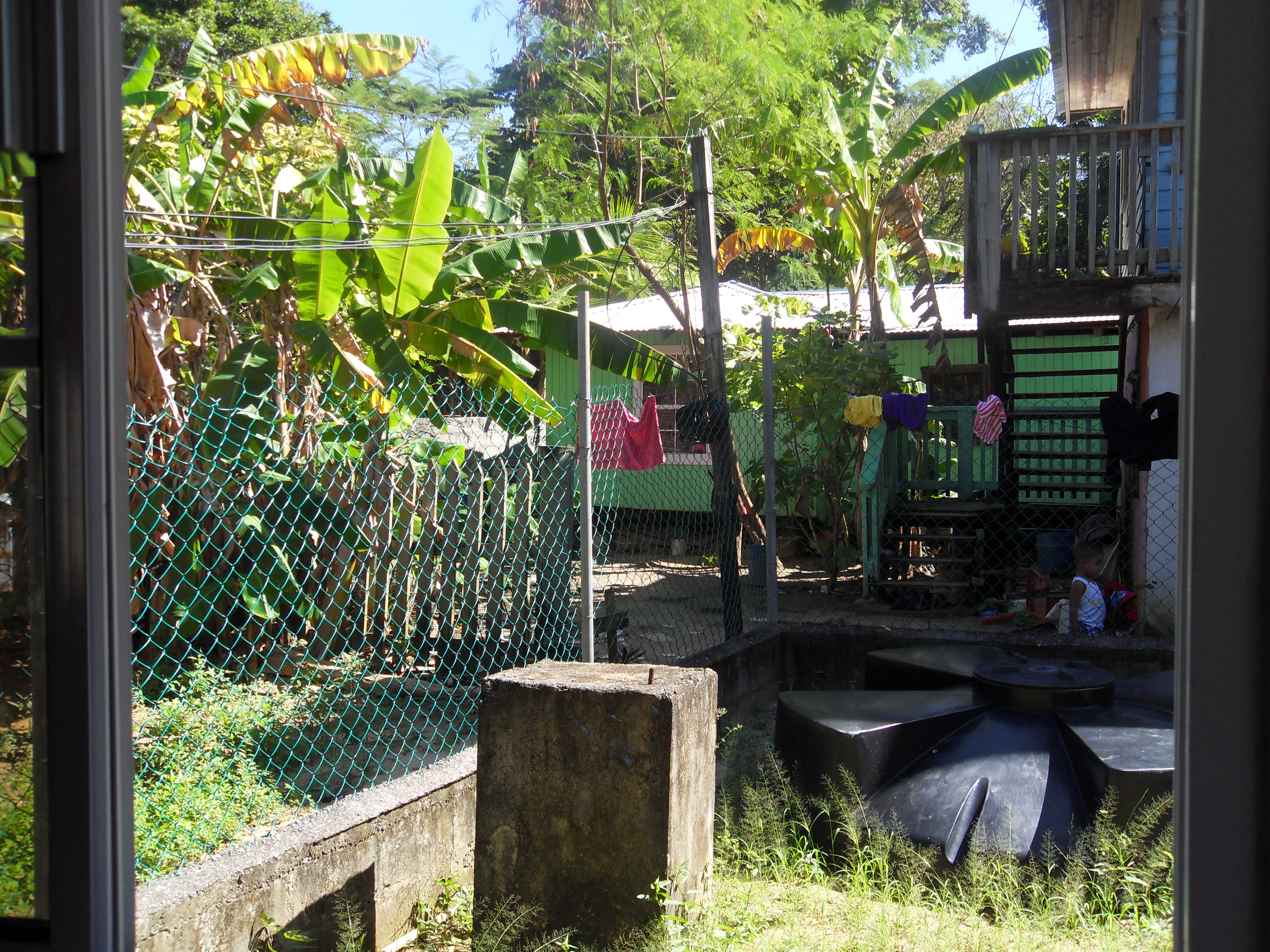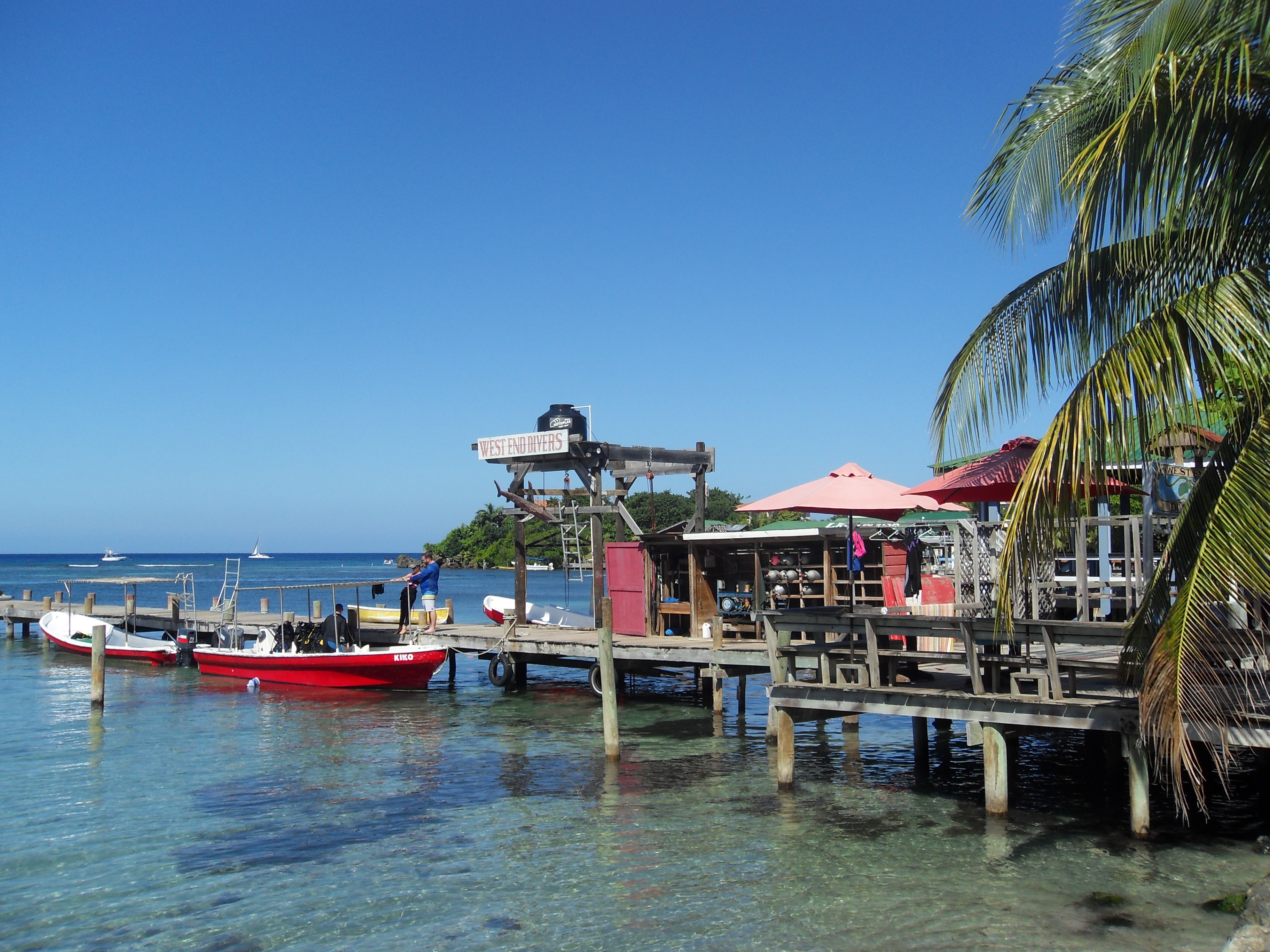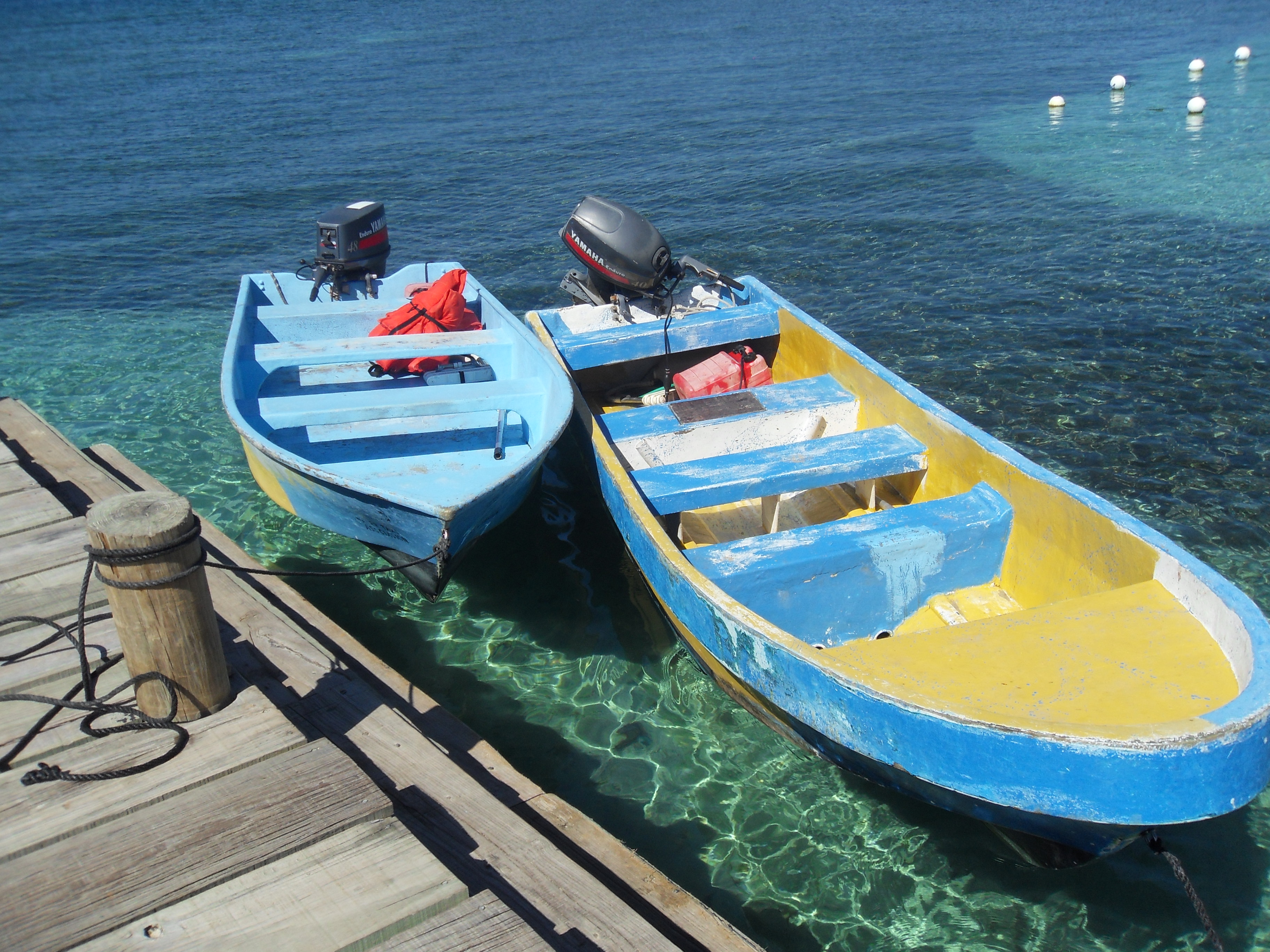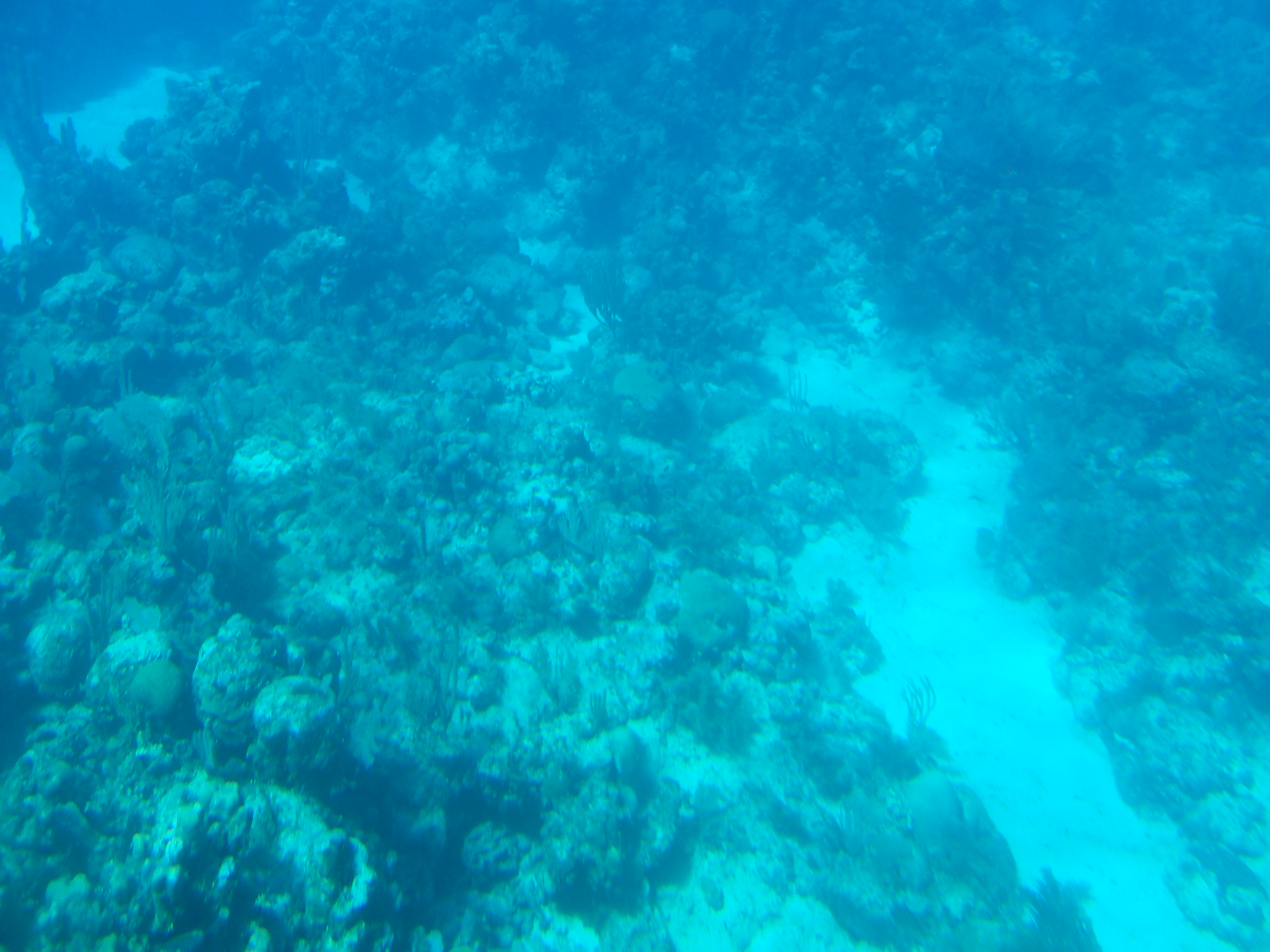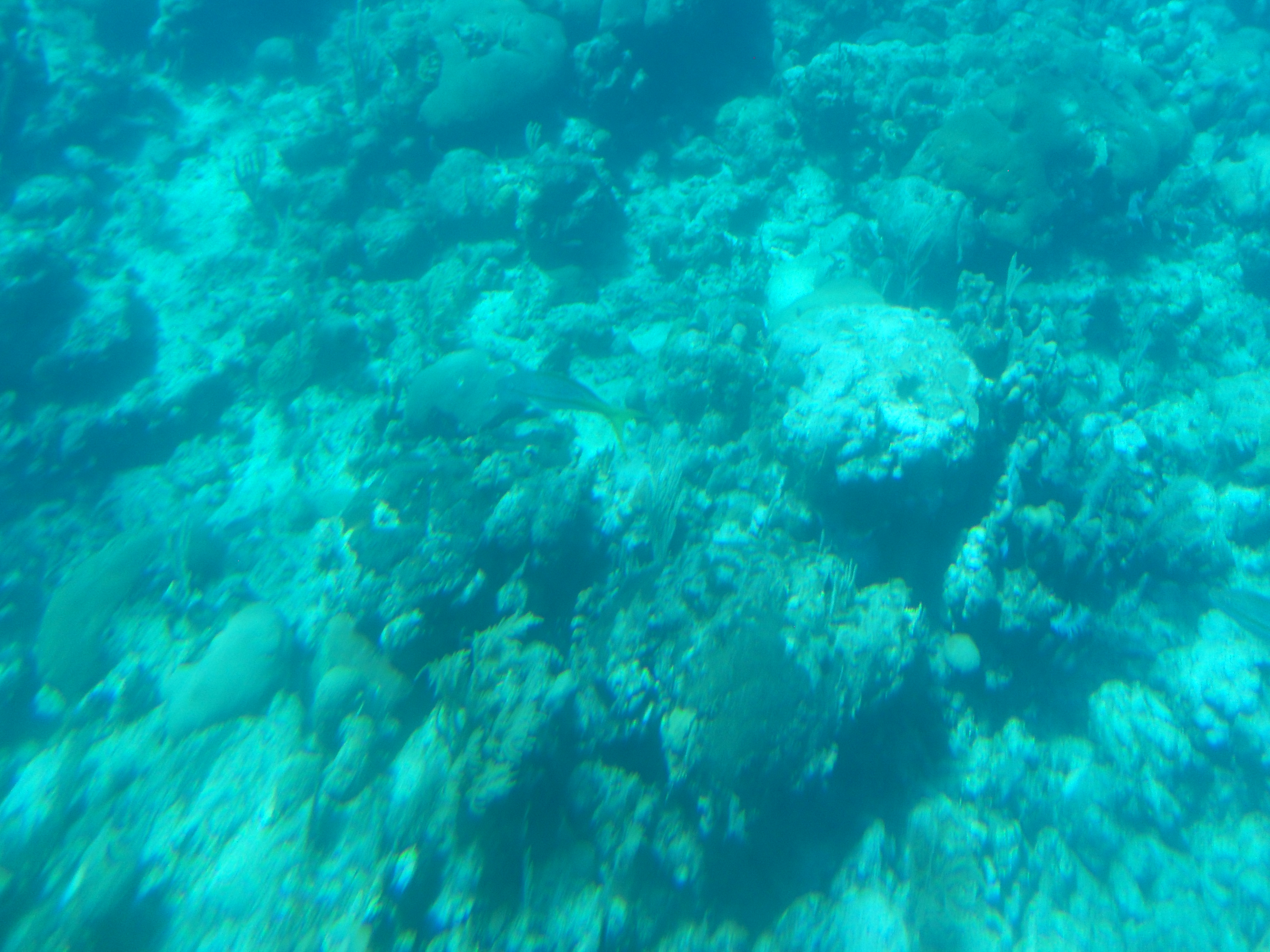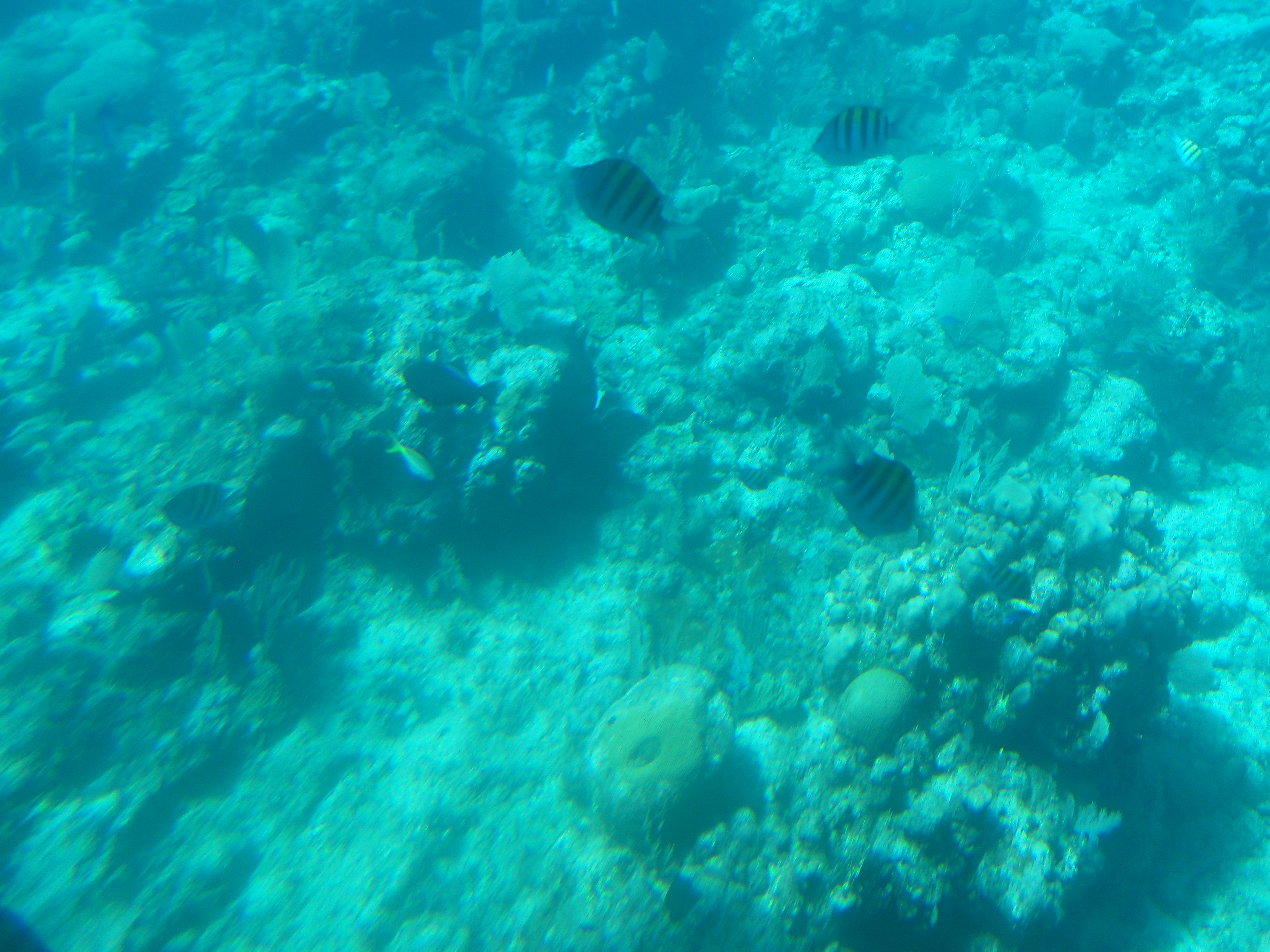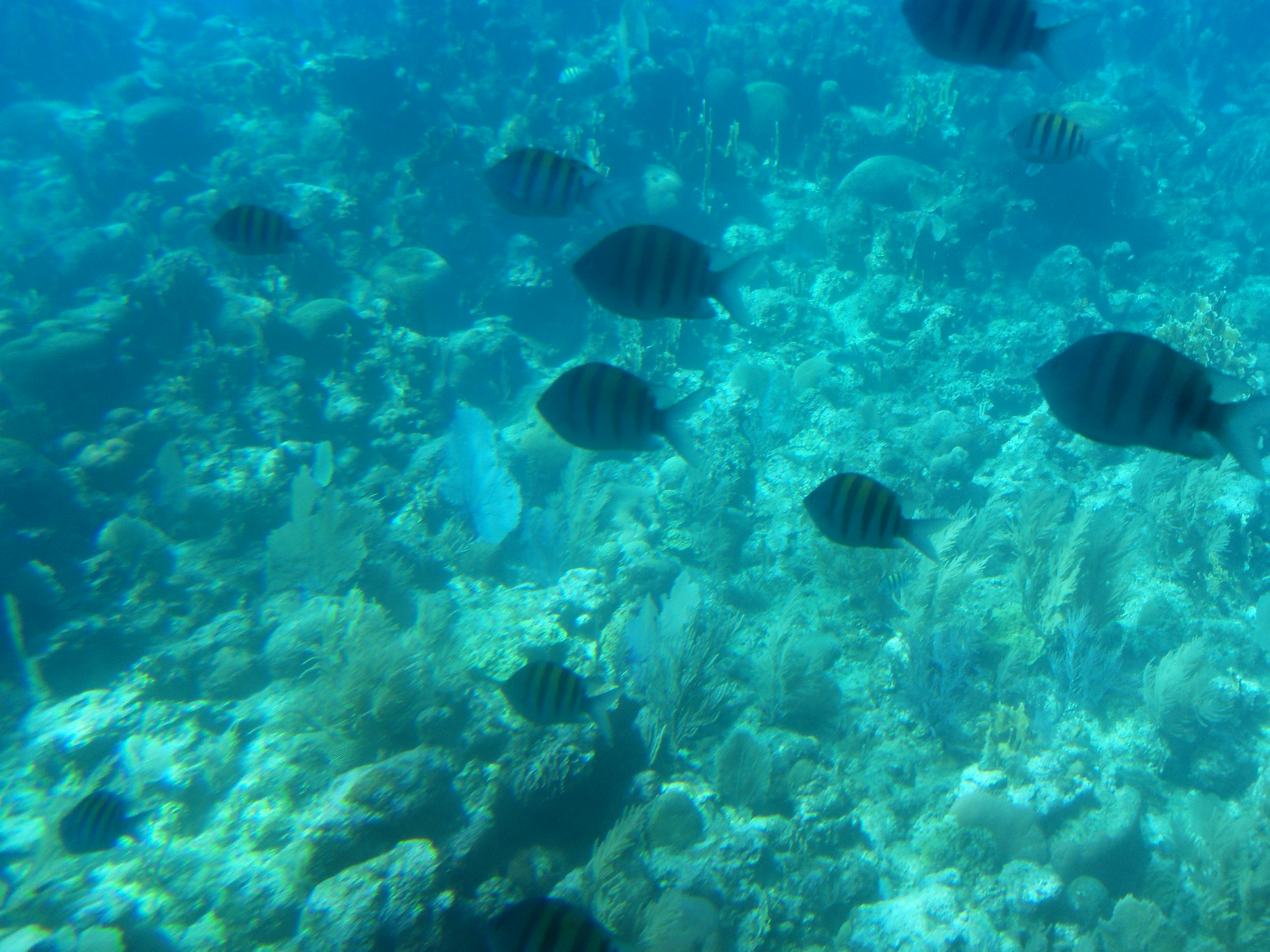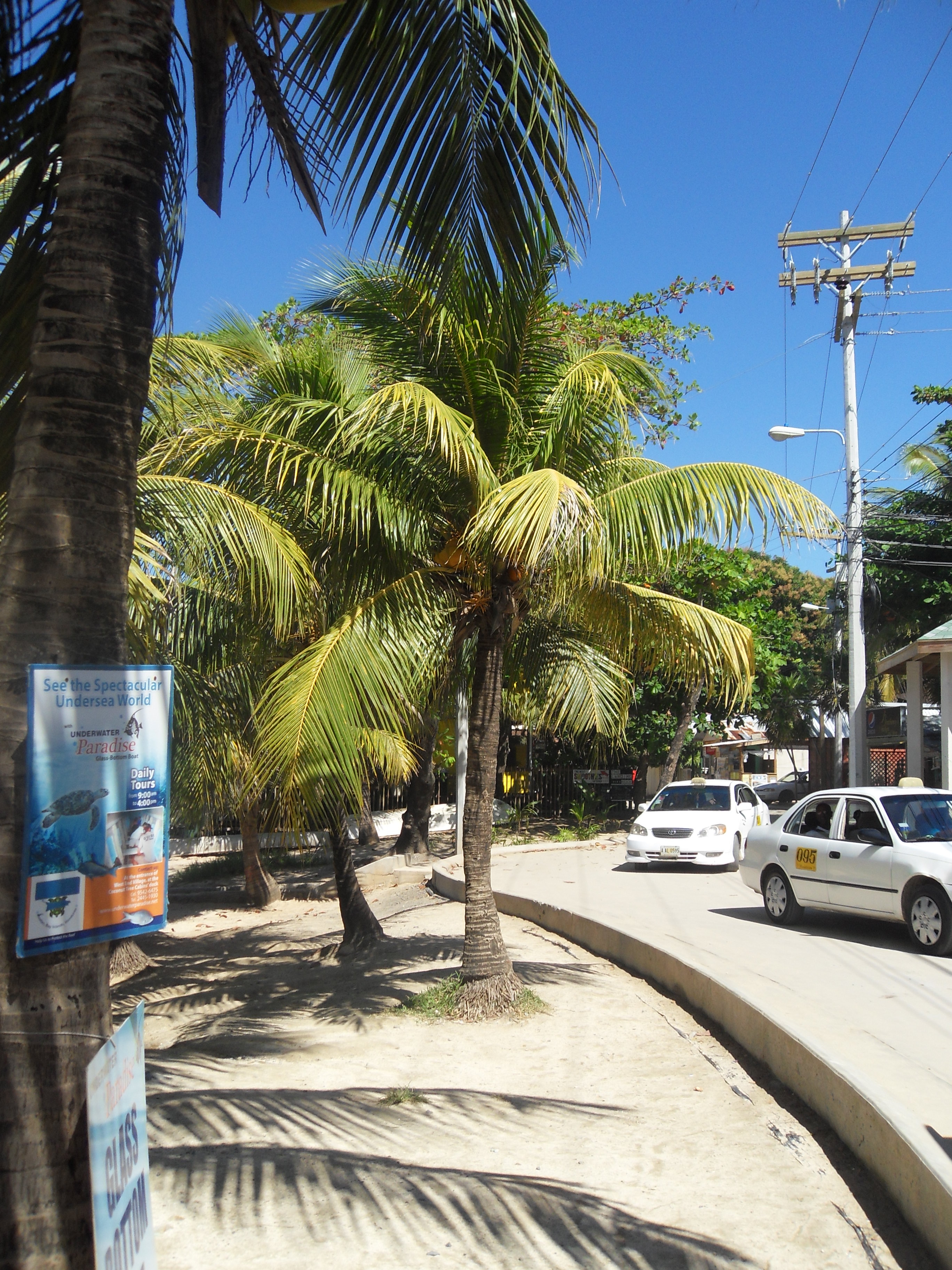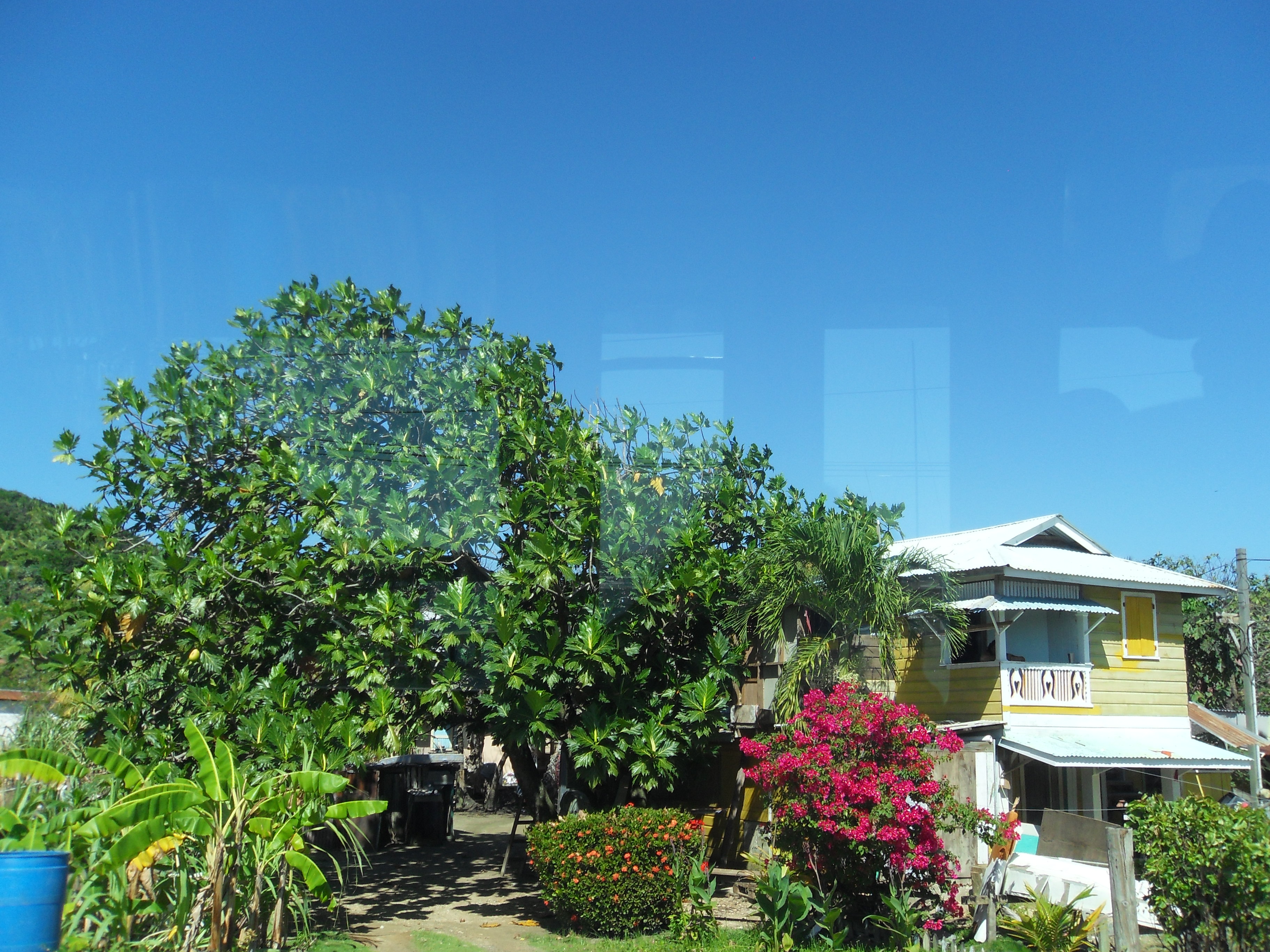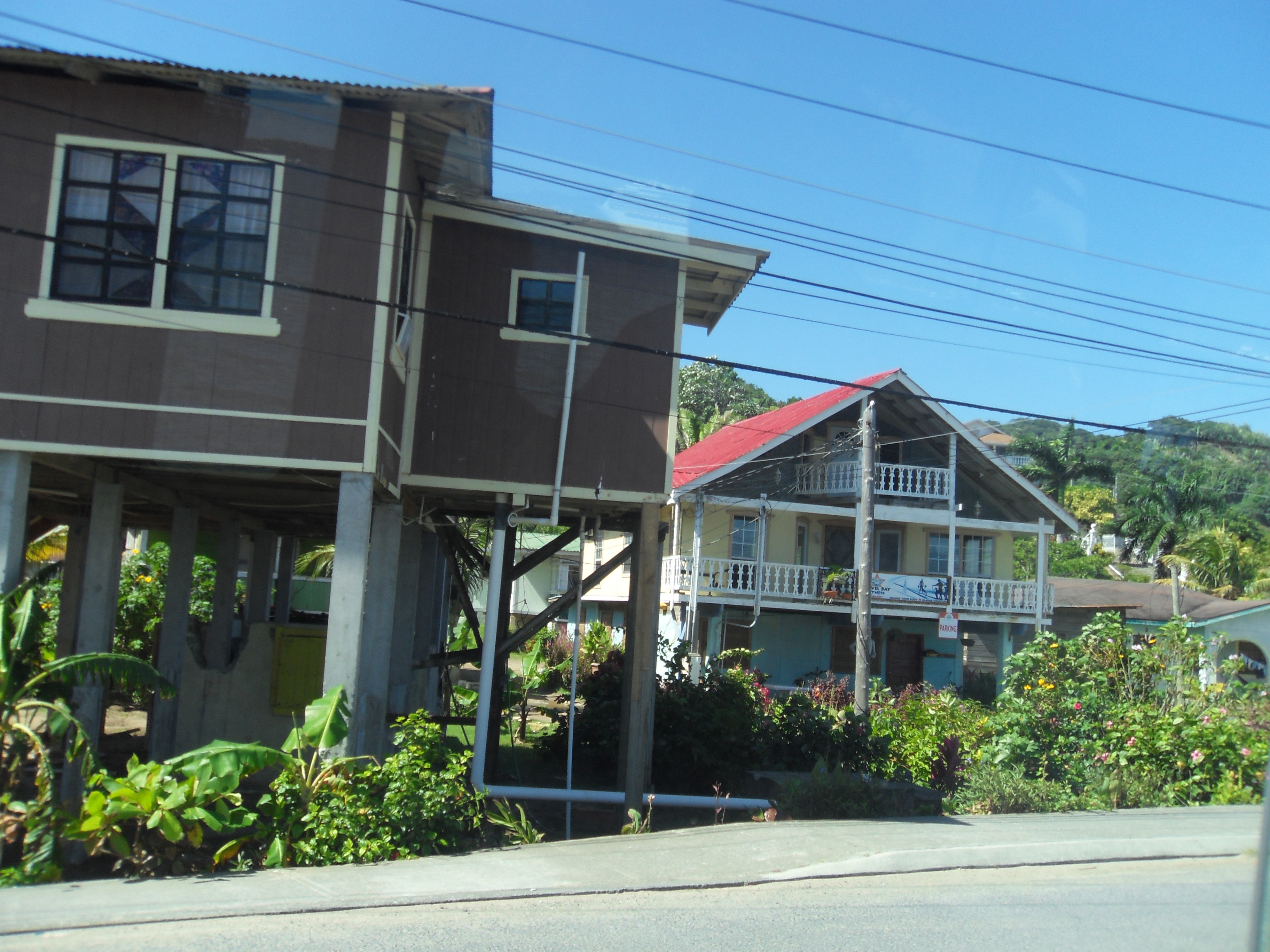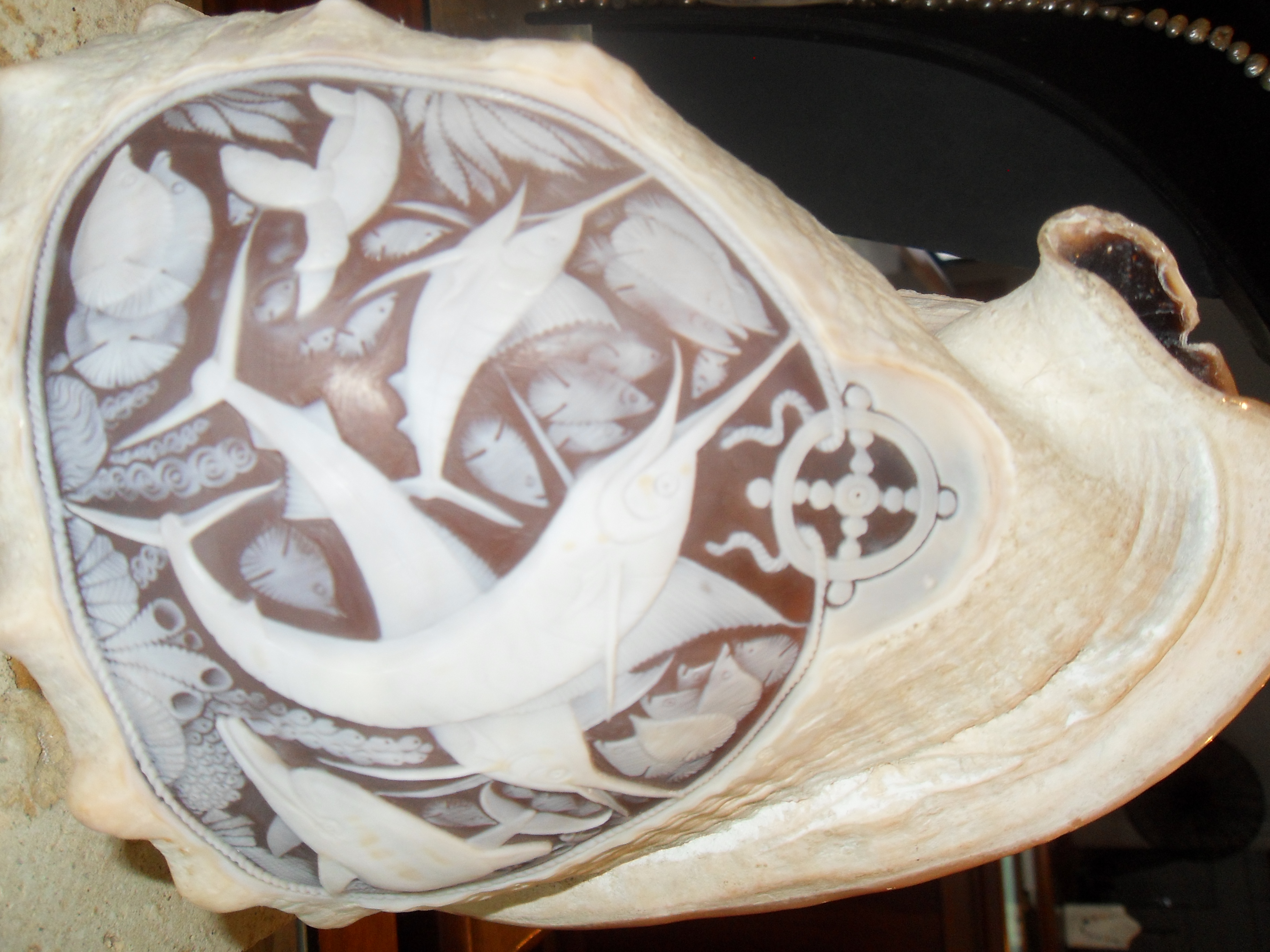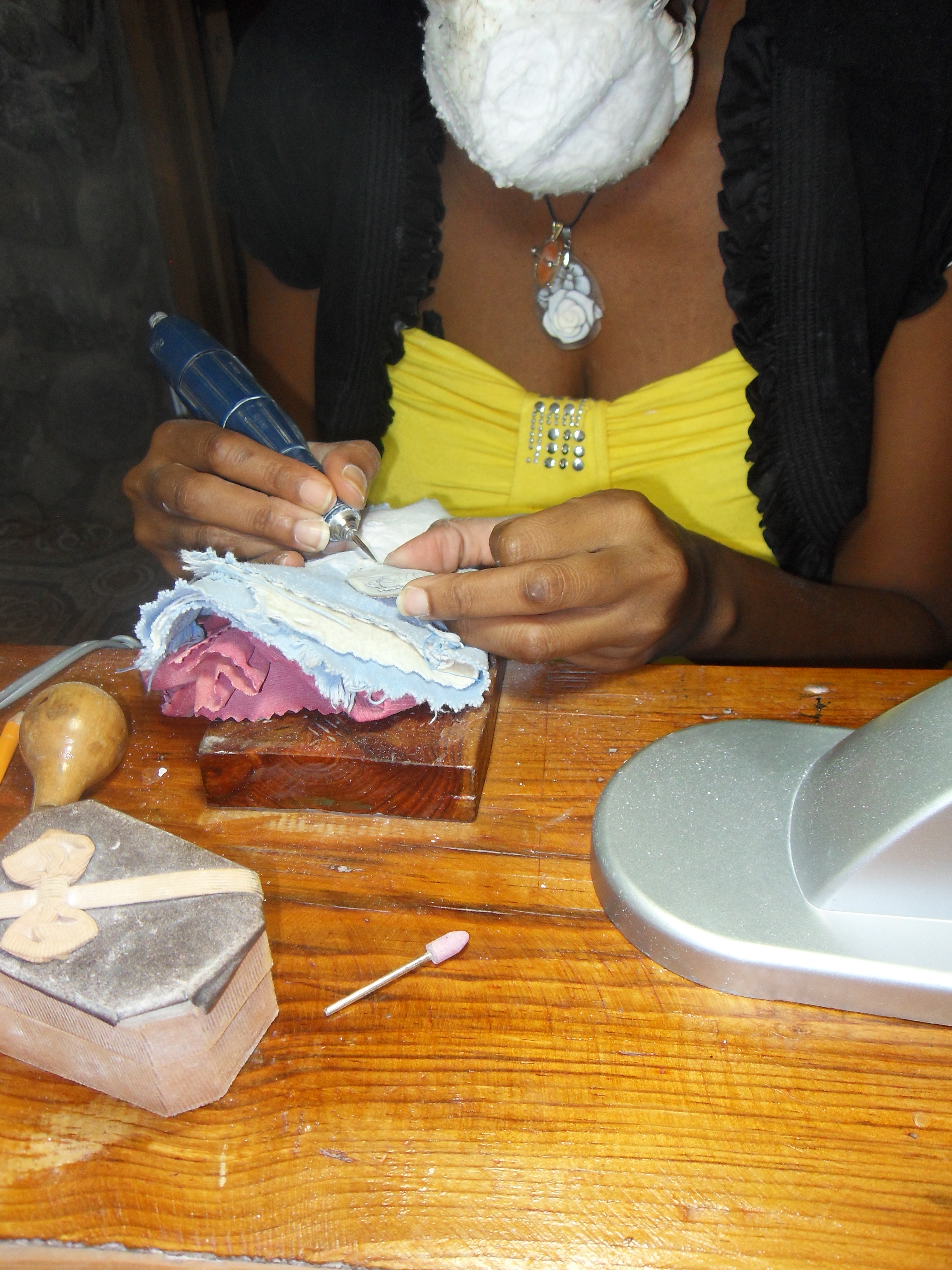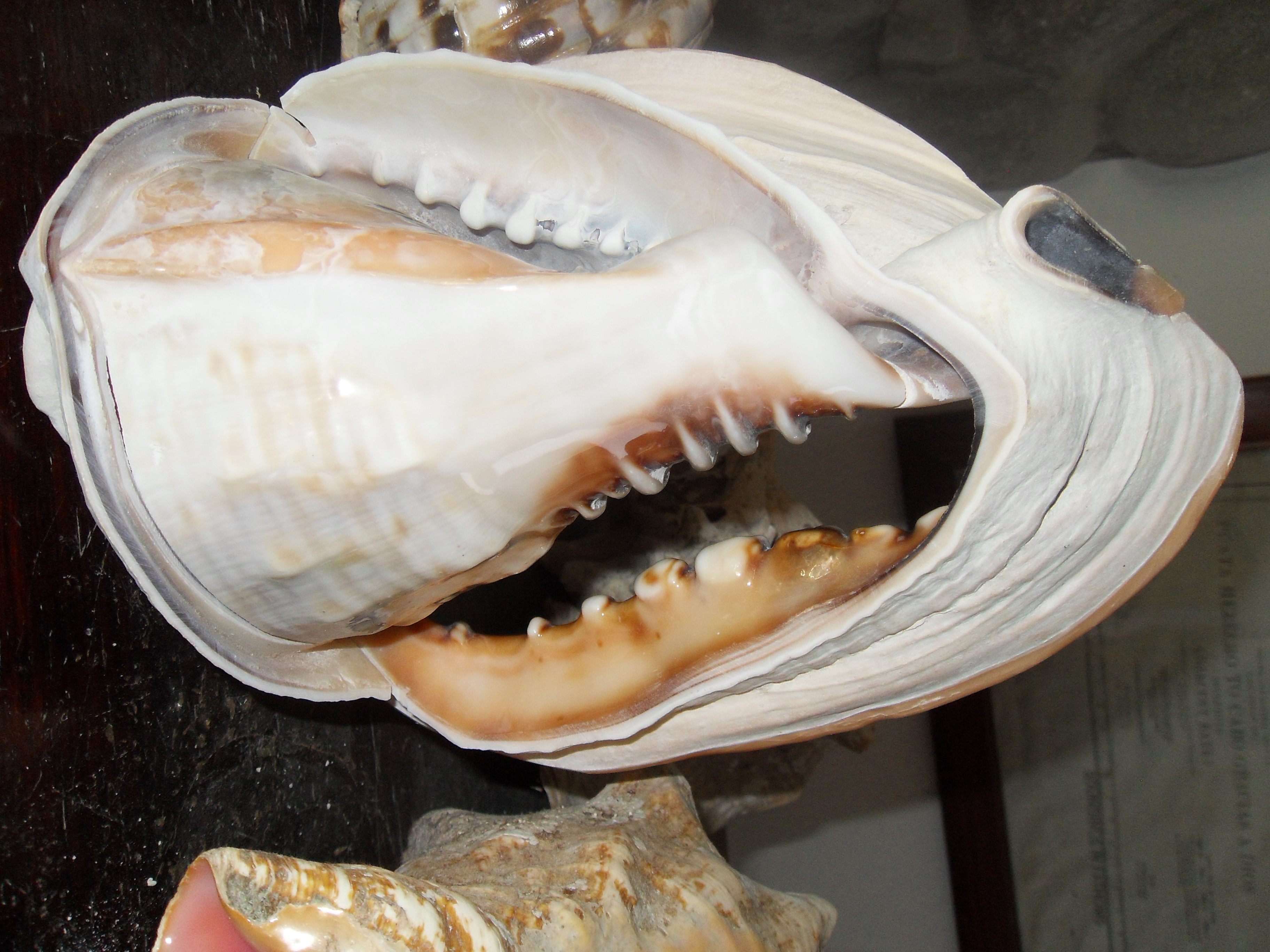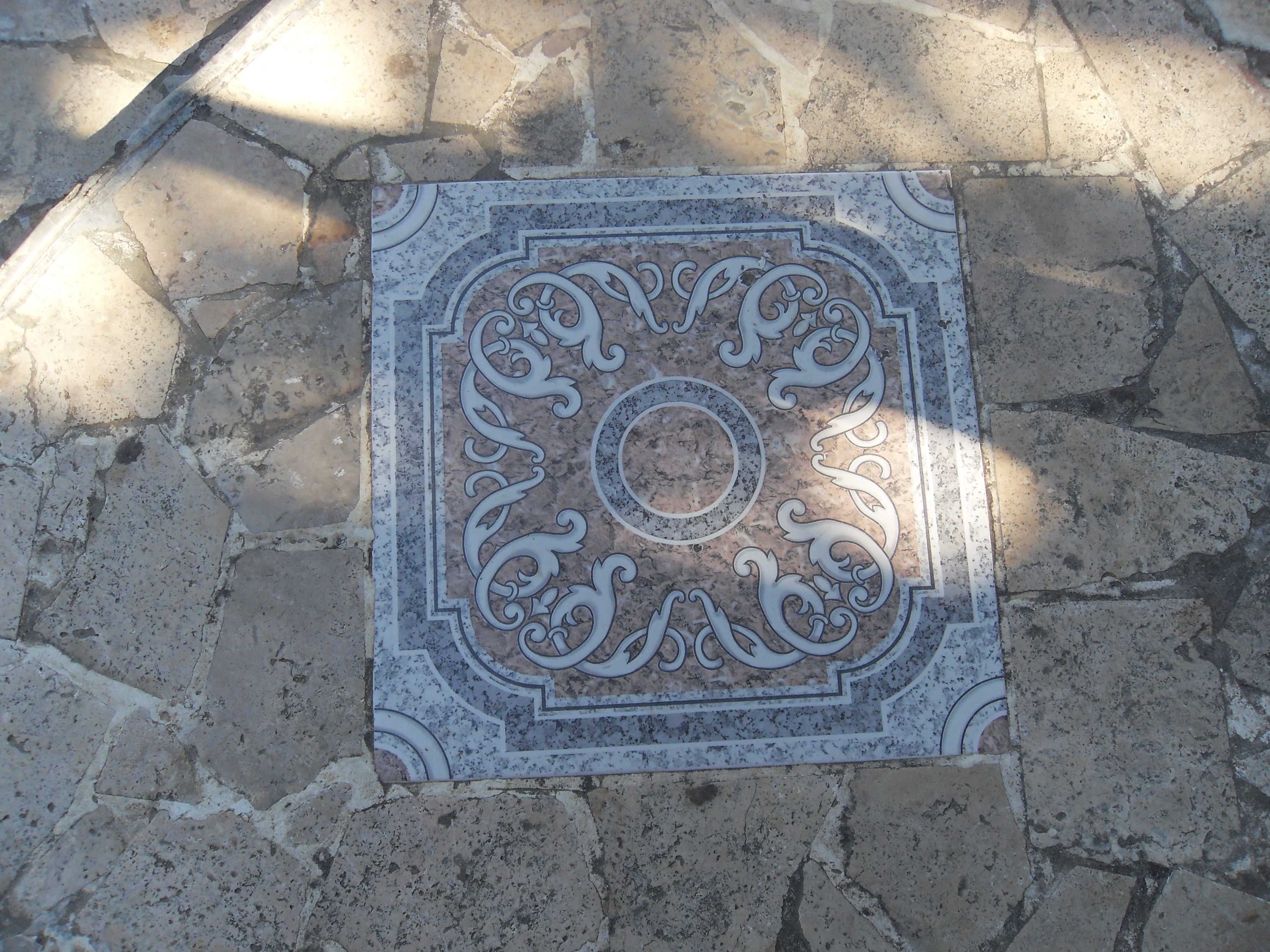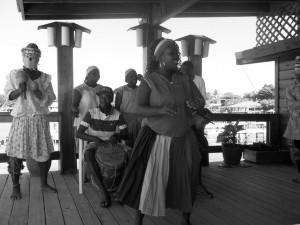January 2, 2013
ROATAN, HONDURAS
THE BAY ISLANDS
t was fitting that we landed in Roatan, Honduras on Andrea’s birthday. The sky was bright blue and the sun shone warming the earth to 82 degrees. We ran to the pool to watch the ship as it reached the port after breakfast. I got choked up thinking of the time 18 years ago when Mike, Jeff and I went toTegucigalpa, the capital, to adopt Andrea. The port looked like a quaint picture post card which is not what I expected.
I expected it to look like Galveston harbor but I think wiser business-oriented minds decided a port on an island which is a tourist destination should look nicer. The shops’ façades were painted blue, green and yellow and lined the length of the harbor. Native dancers and singers greeted us and posed for photos with whoever was interested in a photo opportunity.
There was a large Christmas tree and a large picturesque “Welcome to Roatan” sign that everyone posed in front of, too. We walked around and browsed the shops until it was time to meet our tour guide.
It wasn’t hard to find her. She held a large sign that read, “Glass Bottom Boat” and we all lined up behind her.
Her name was Jazlyn but asked everyone to call her Jazzy. She loaded us into an air conditioned bus and held our interest talking about Honduras and the Bay Islands of which Roatan is a part.
“What language do you think is the official language of the Bay Islands?” she asked us.
Sensing that this was a trick question, I answered, “Not Spanish.”
The Bay Islands were originally a British not a Spanish possession. So, English was spoken before Spanish although many people speak both and some know one language better than the other. Some speak and understand one and understand but don’t speak the other. Jazzy didn’t say how many knew which language better. I think she said children learn both languages in school. On the mainland, Spanish is the official language.
When she found out that Andrea was born in Honduras, she gave her a fist bump.
Our first stop was the Village of West End where we witnessed another performance by native dancers. These people like the ones who greeted us at the port are members of the Garifuna tribe. The have their own language (Arawakan) in addition to the English and Spanish languages of the Bay Islands. The Garifuna tribe traveled to Honduras from the Caribbeanin 1797.
They performed dances that their ancestors brought to the New World. The lead dancer got Andrea to dance with her (and I have the photo to prove it).
We had time to browse the shops for handmade dolls; jewelry; woven hammocks; clothing; painting; wooden bowls and vases; shell art; and more.
I asked the clerk in English if I could use my card. (I know they take American cash.) She didn’t understand me and had a young woman I guessed was her daughter answer my question (which was that they credit card company would add 12% to the bill). So I found someone who knew more Spanish than English and another person who knew both. Not a scientific survey of Honduran languages, I admit.
Restaurants were scattered among the shops including a Thai Restaurant called Tong’s Thai Island Cuisine. (There’s a Pizza Hut and a Bojangles somewhere on the island but no McDonald’s.) At the end of the main drag is a small white frame Baptist Church complete with steeple just like many rural churches from long ago.
The town’s main road is brand new. However, the local authorities forgot to add stop signs and traffic signals when they finished construction. When we walked down a street and a vehicle zipped by, we jumped on the sidewalk. The sidewalk consisted of an edge made of cement while the sidewalk proper was filled with dirt.
The road ran parallel to the beach which was dotted with small piers. I assume that there is a stretch of beach where you can lay out and get a tan but I didn’t see it or should I say “them” because I understand there are a lot of them.
Divers (and there are a lot of them, too) and fishermen take boats out during the day. There are canoes, sailboats, row boats and motorboats.
Fishing and tourism are the main industries on the islands.
Fresh fish is caught every day and is a feature at all the restaurants. Residents also grow their fresh vegetables. Banana, bread (first time I heard of such a tree), coconut, cashew and other trees grow everywhere. A vegetable peddler drives around with a variety of fresh veggies in back of his truck daily. Cashews are abundant and roasted from April through July.
Our next stop was the Glass Bottom Boat which was waiting for us at one of the piers just beyond the village.
We all squeezed in the bottom of the boat which predictably was surrounded by glass. We watched sea life pass us by: sea grass, scuba divers, turtles, various fish…they all coexist happily many feet under the sea’s surface.
As we drove through rural hilly Roatan, Jazzy gave us more information on the educational system on the islands.
There are several schools including a Seventh Day Adventist college. (There was a Seventh Day Adventist school in back of our hotel inTegucigalpa when we were there for Andrea’s adoption.) There are bilingual schools and uniforms are mandatory. As a result of the school system, almost everyone (except one store clerk) speaks some Spanish and/or English. This only applies to the Bay Islands because of its history as a British possession.
There are no school buses. Students walk or use public transportation or, if they live in a remote area, take a cab to school.
Our last stop was the cameo factory. One of three cameo factories in the world is located in Roatan. The other two are in Milan, Italy and Japan. The setting was veryquaint. The factory/studio was on a street that was parallel to the shore. A small flagstone courtyard and an iron bell bordered the property on one side. The bell hung from a wrought iron arch and was another backdrop for photo opportunities.
The crafts people carved beautiful designs on shells of all shapes and sizes similar to scrimshaw. Some pieces were turned into jewelry.
The rest of the neighborhood was residential. The stucco homes (some of which are built on stilts or blocks); tropical flowers and sunny weather looked just like the photos in travel magazines only this was for real.
We could see the Mariner of the Seas and another ship from Holland America docked at the harbor from the cameo factory. Andrea and I walked along the shore, taking pictures and drinking in the sea, sun, palm trees and beautiful flowers.
When the tour was over and we returned to the harbor, Andrea and I ran to the ship to get the cash we left in our vault on the ship.
We spent the rest of the day shopping at the port. There were the requisite tourist shops including a perfume shop (fairly decent prices for brand names), carts with souvenirs and Honduran fast food. A three piece band consisting of three old men played for our musical enjoyment. (They were very good actually.) We didn’t buy too much because I have a lot of stuff from our previous two trips to Honduras.
Our real objective was lunch and we wanted to eat at a Honduran restaurant not the Windjammer. We found one above the perfume shop. The food was good but the service was very slow. We ate chips and salsa with hot peppers and chicken fajita with rice and beans – typical Central American fare.
By late afternoon it was time to return to the ship. I didn’t want to leave and I don’t think Andrea did, either. The scenery was too sunny, beautiful and relaxing. When we returned to the Mariner, we decided to get some sun by the pool late as it was. The days are warmer in the Caribbean in the winter but they are also shorter just like they are up north. Andrea ordered an alcoholic Mango Tango (Like!) in another souvenir glass as we watched Roatan recede in the distance. (I just drank wine.) We could see cars wind their way on roads that wound through the hills of the town. Lights slowly lit up the harbor as the Mariner made its way toward Belize.
At the Sound of Music, the wait staff greeted us like they were truly glad to see us. Considering what I tipped them at the end of the cruise, I guess I would feel the same wayJ
On this particular evening, I ate Moroccan chicken salad for an appetizer; sirloin steak with string beans and baked potato; low fat key lime pie for dessert; coffee and Pinot Grigio.
Andrea selected a shrimp cocktail for the appetizer; a vegetarian calzone; Coke, a chocolate parfait and was also given a chocolate brownie as the wait staff and Kristin and Paul (who were celebrating their wedding anniversary) sang “Happy Birthday.”
It was time to see what was happening around the ship. We saw a musical variety show and then headed for the casino – another milestone for her to experience upon turning 21. They didn’t ask for her I.D. when she changed her dollars into quarters bit I offered the info that she was celebrating her birthday. Maybe the gambling age is different than the drinking age? That doesn’t make sense; maybe just lax or they figured she was with me.
She played $10 on some kind of coin game and ended up with $20. Not bad for her first try at gambling while sipping on a Pina Colada. (Like!) I had wine as usual.

